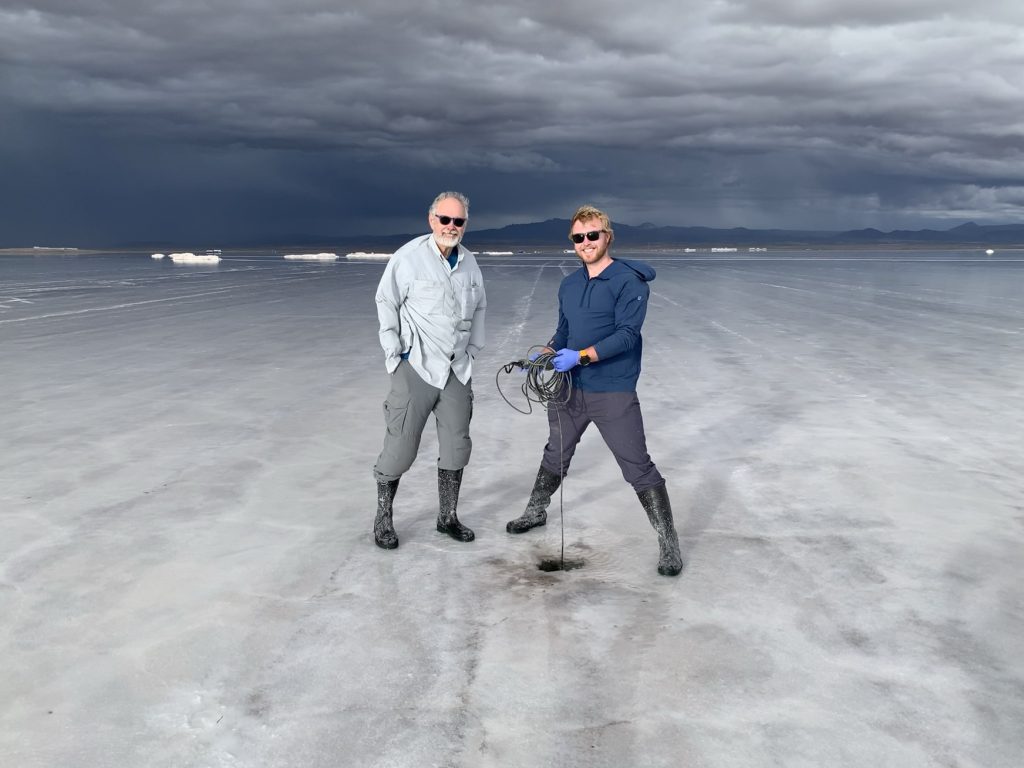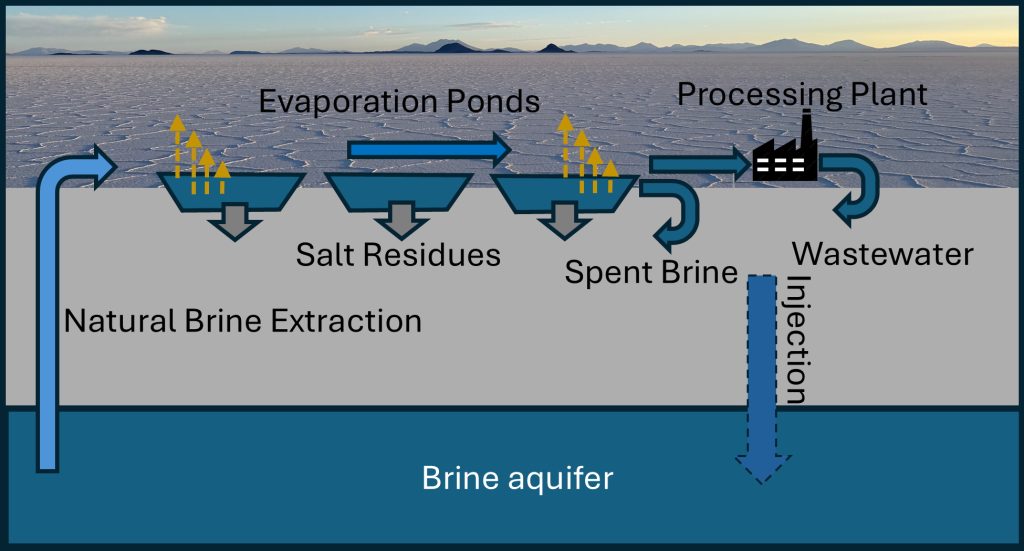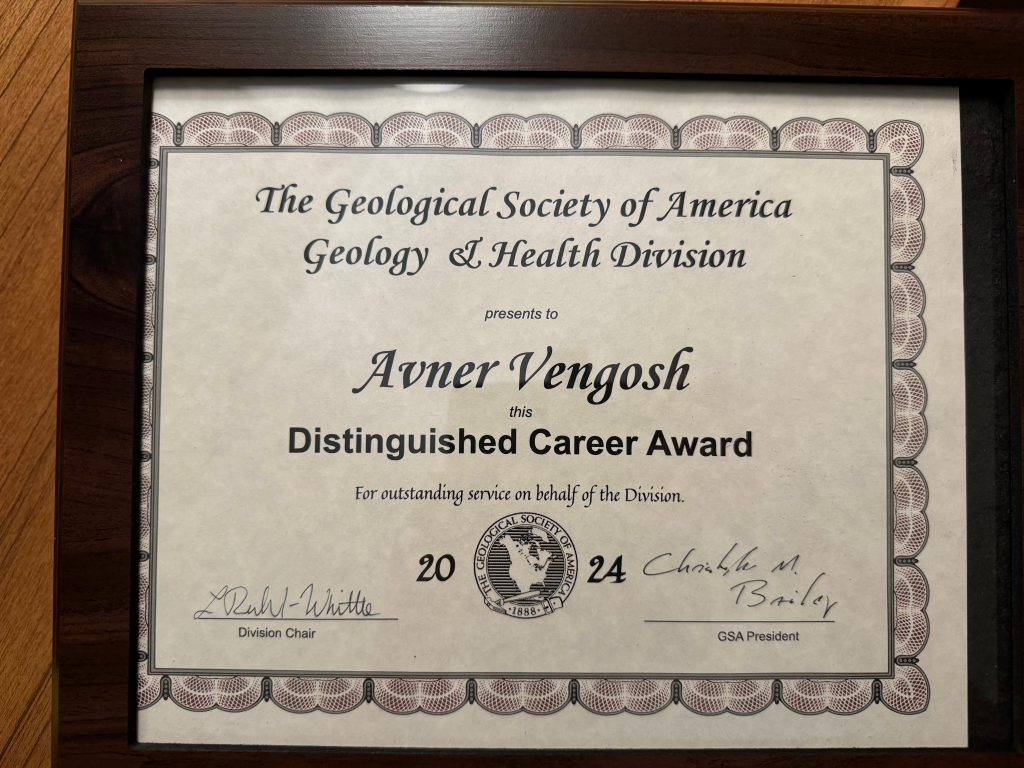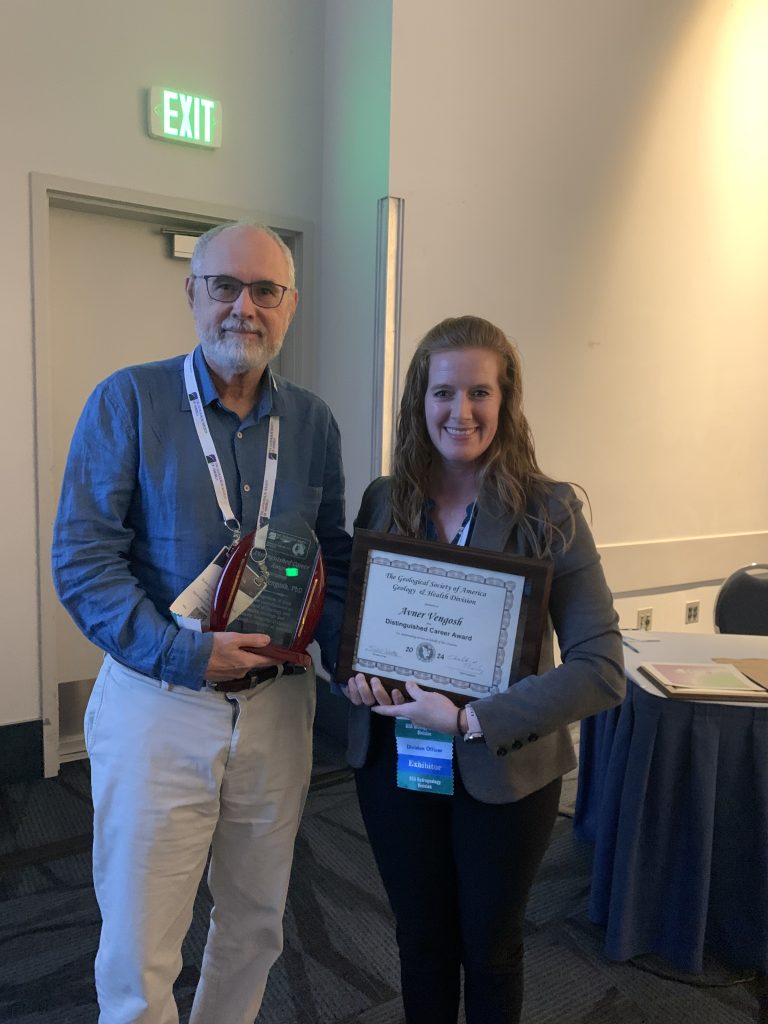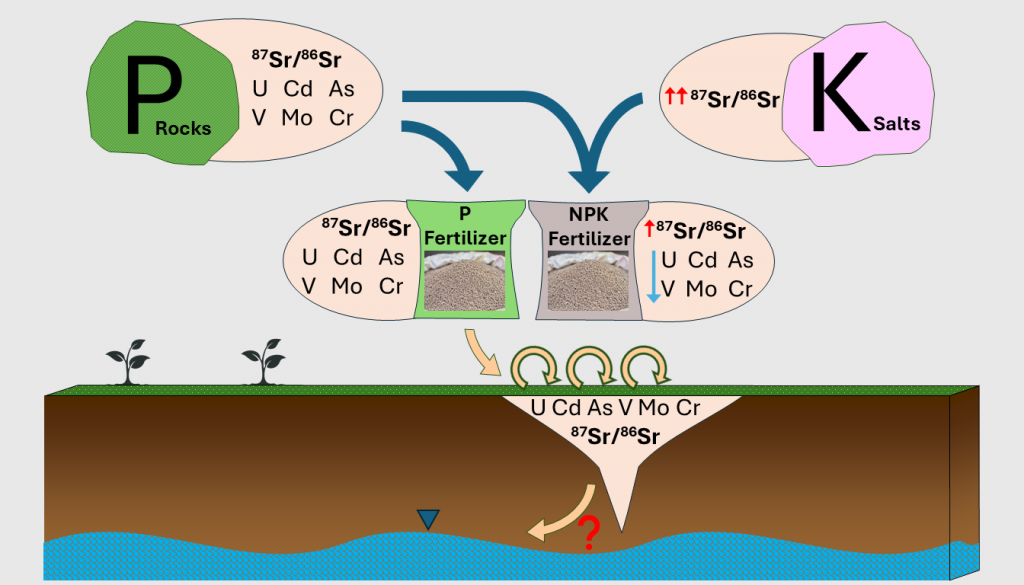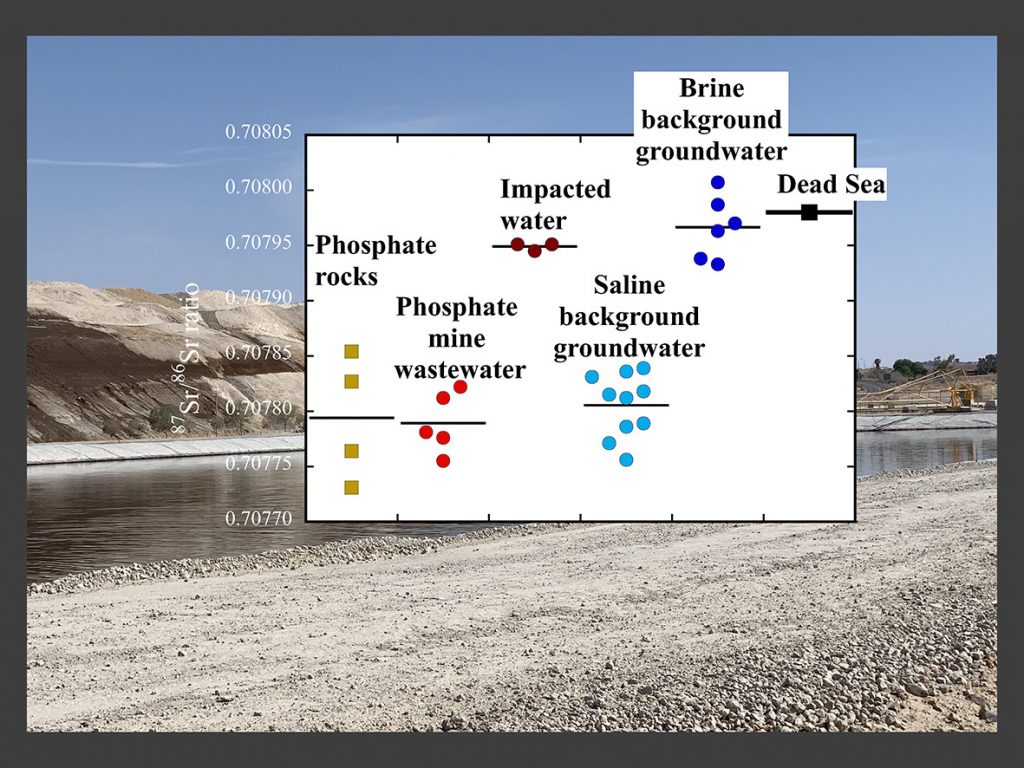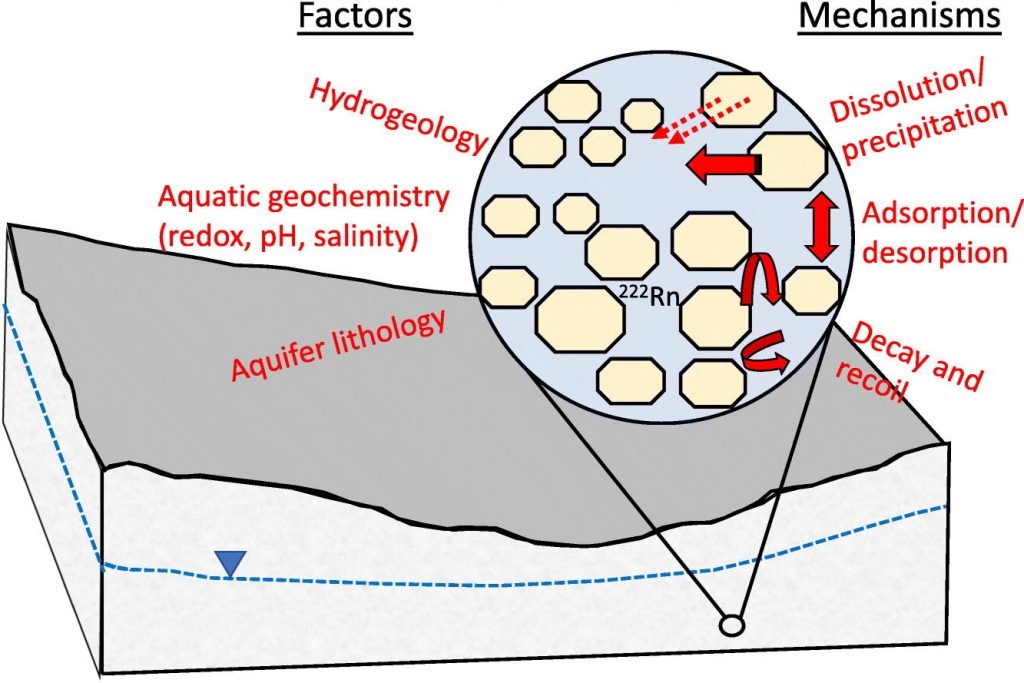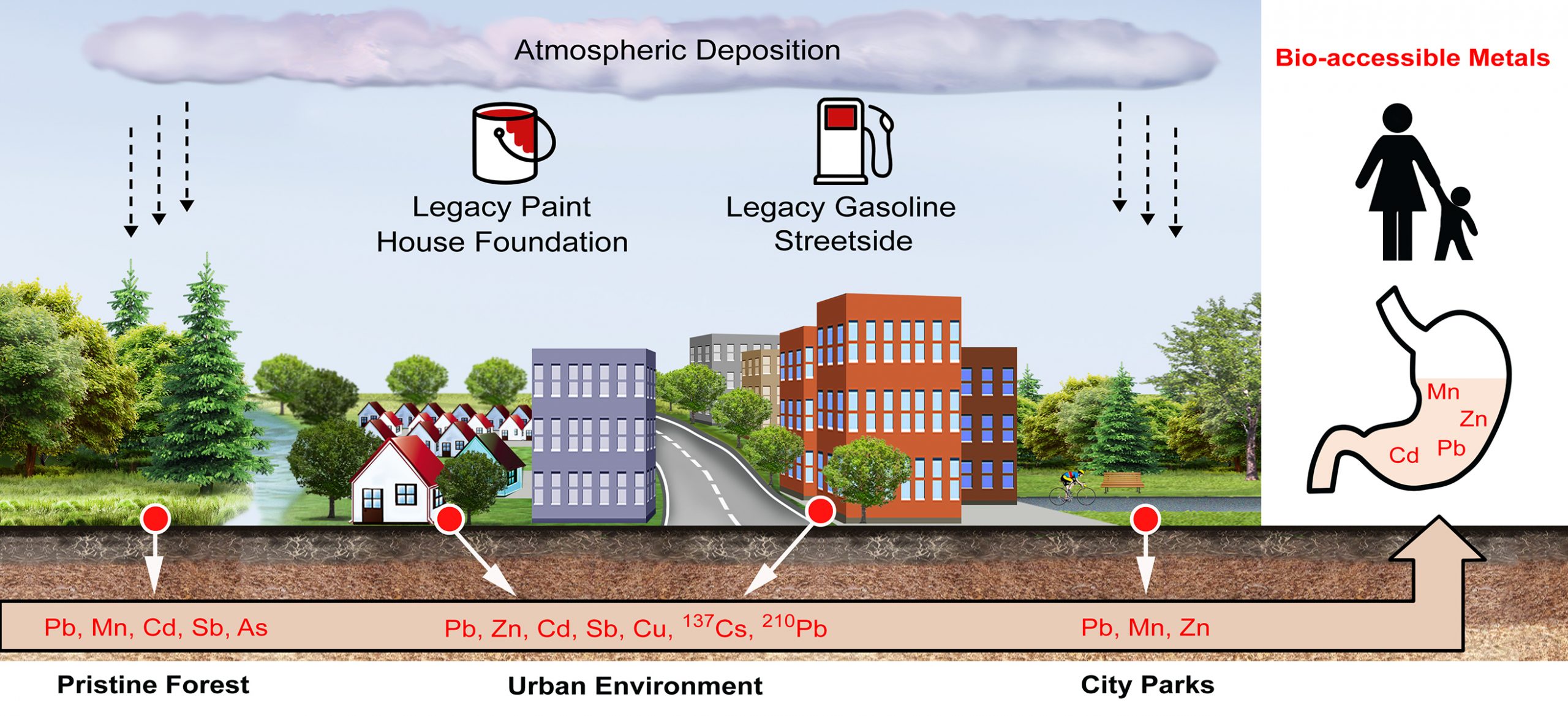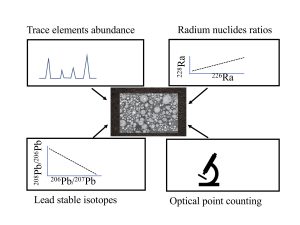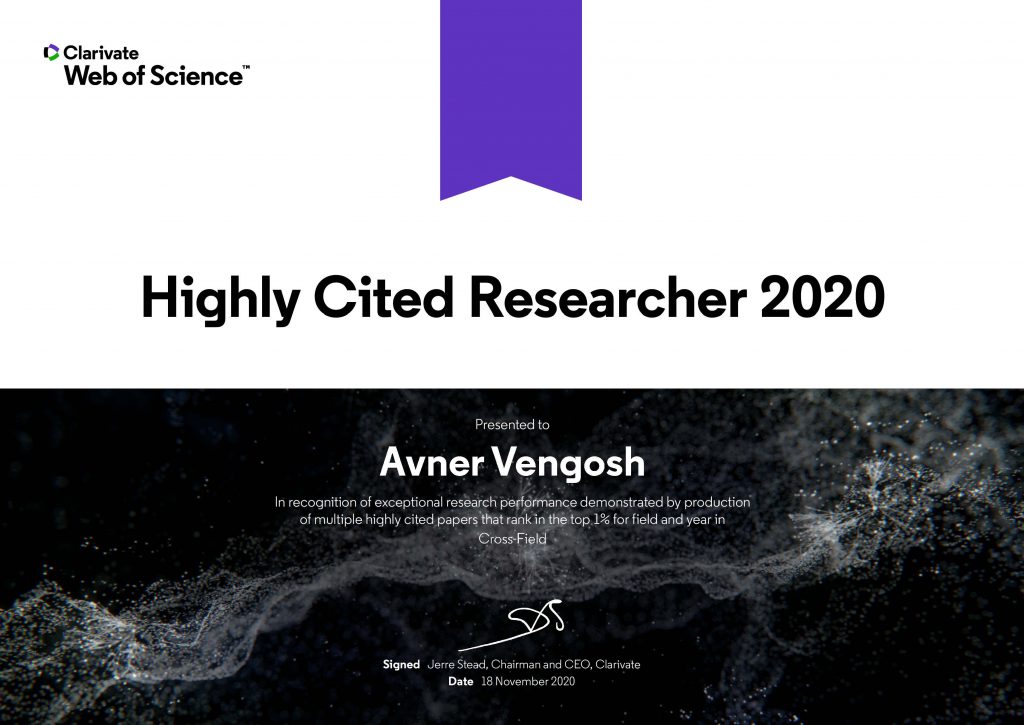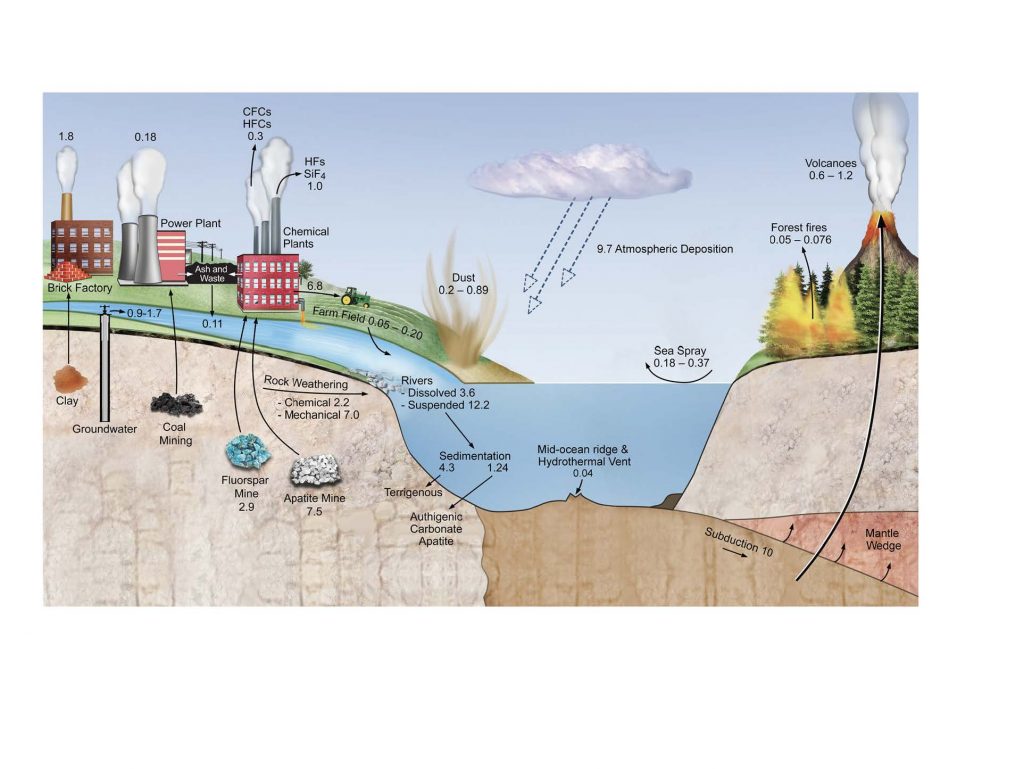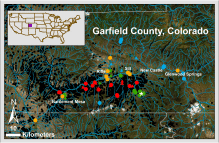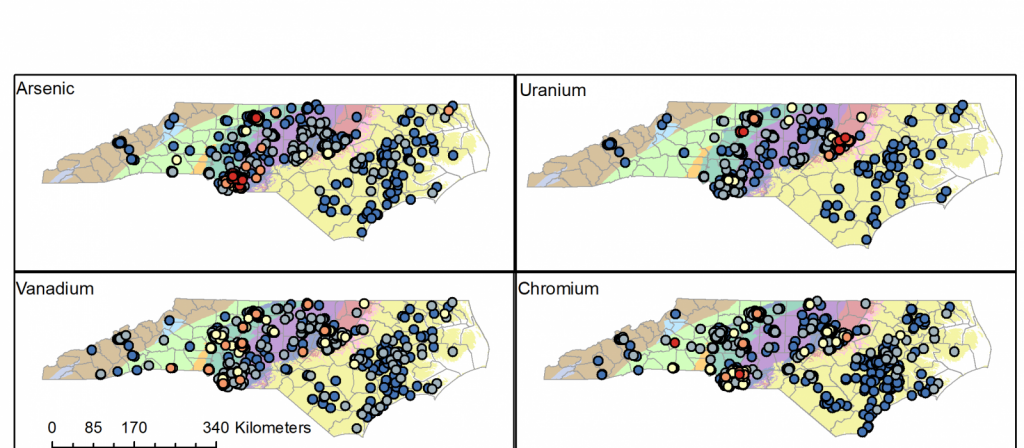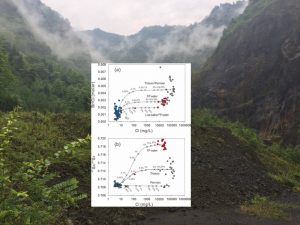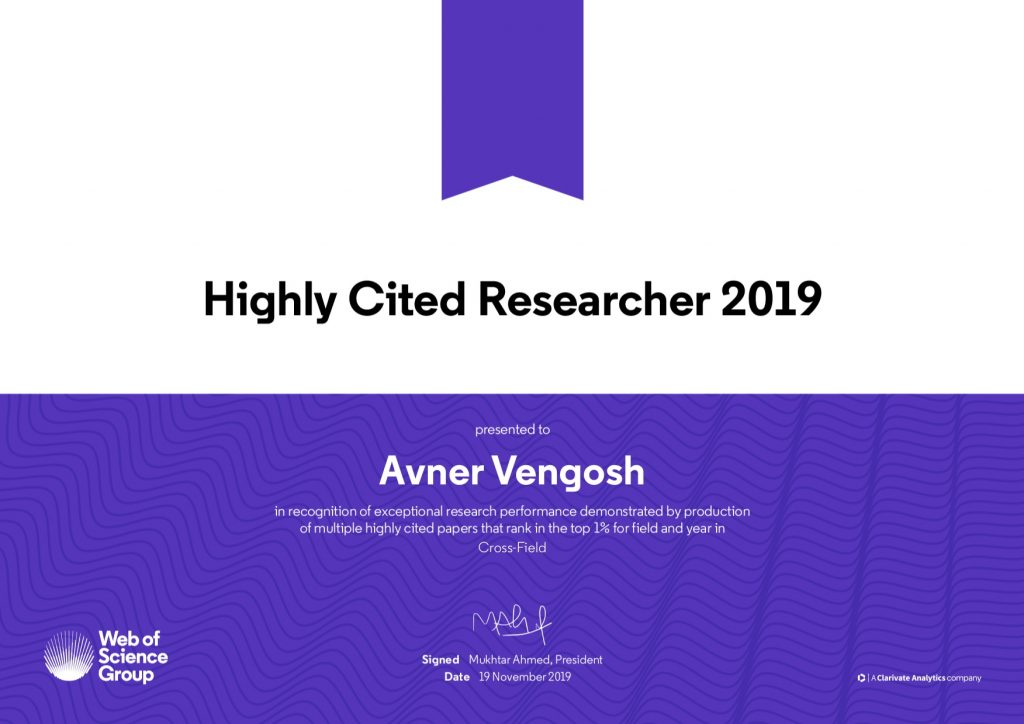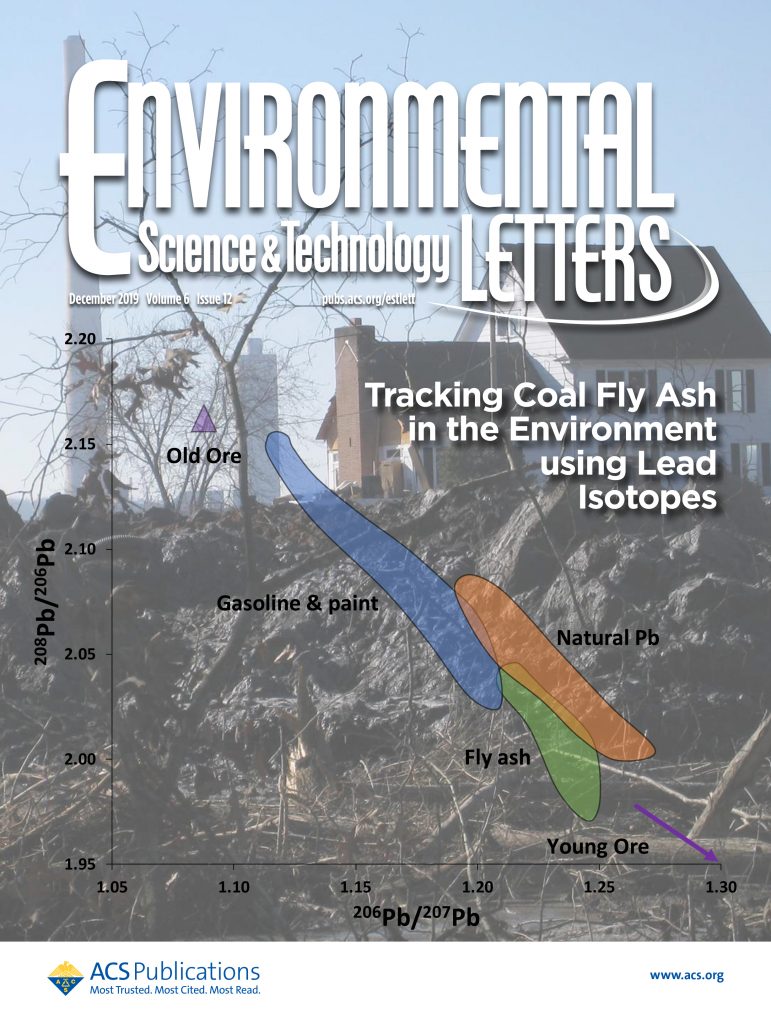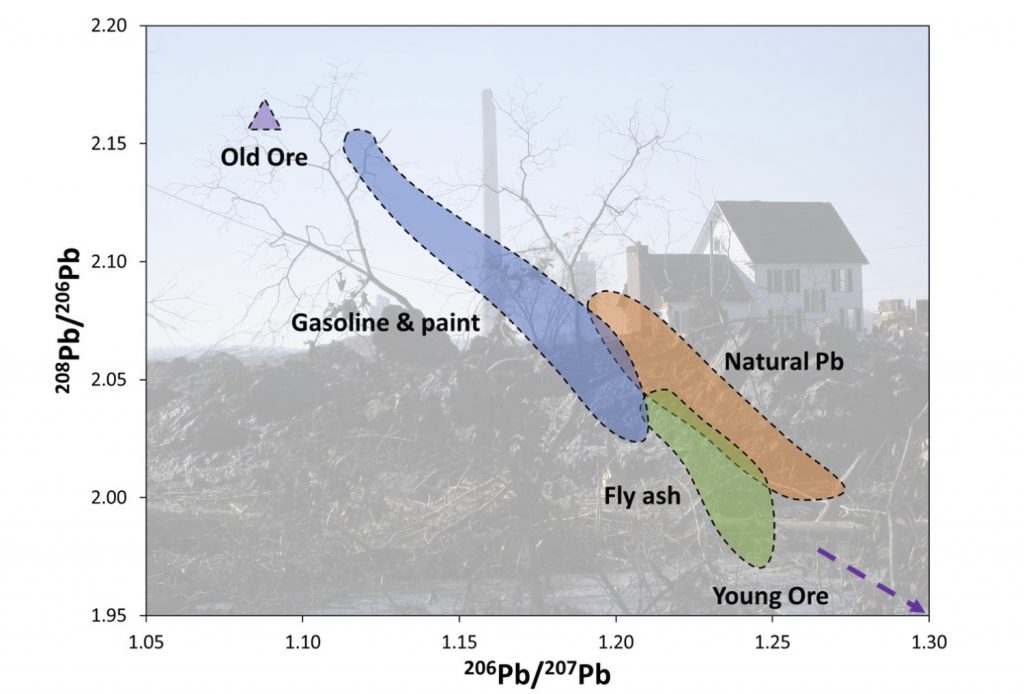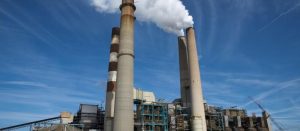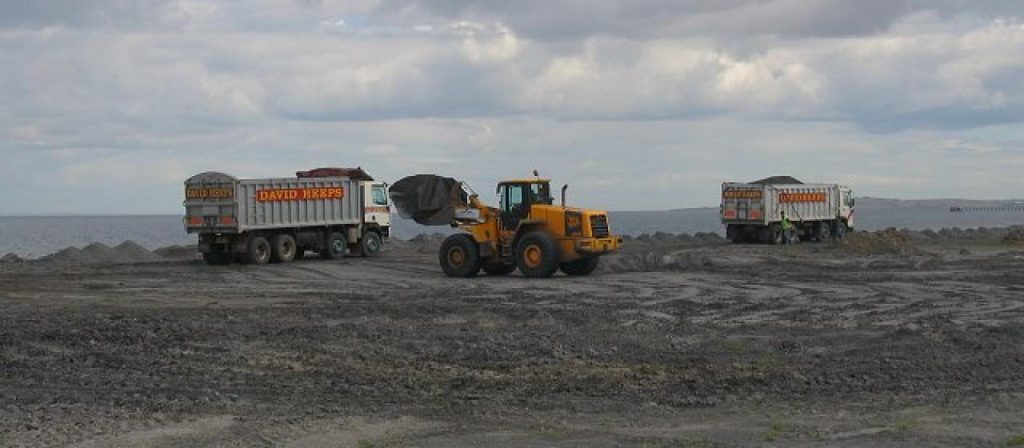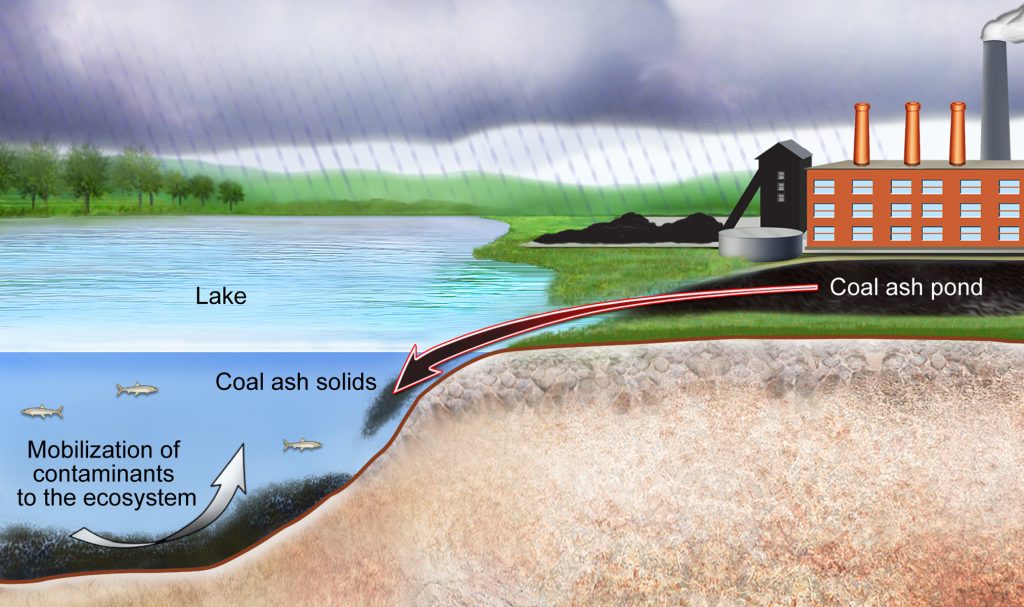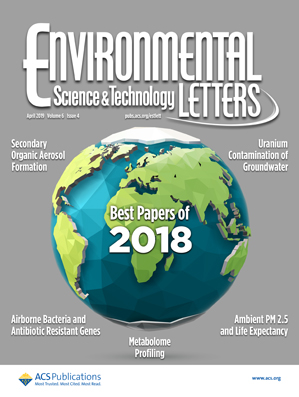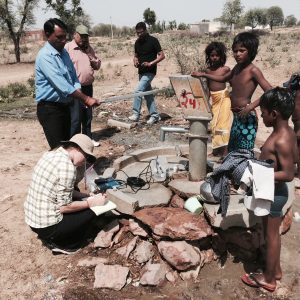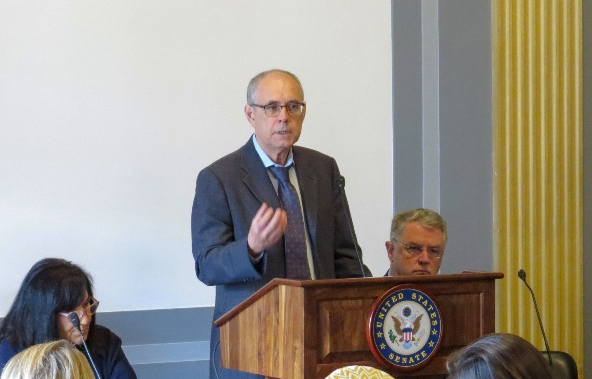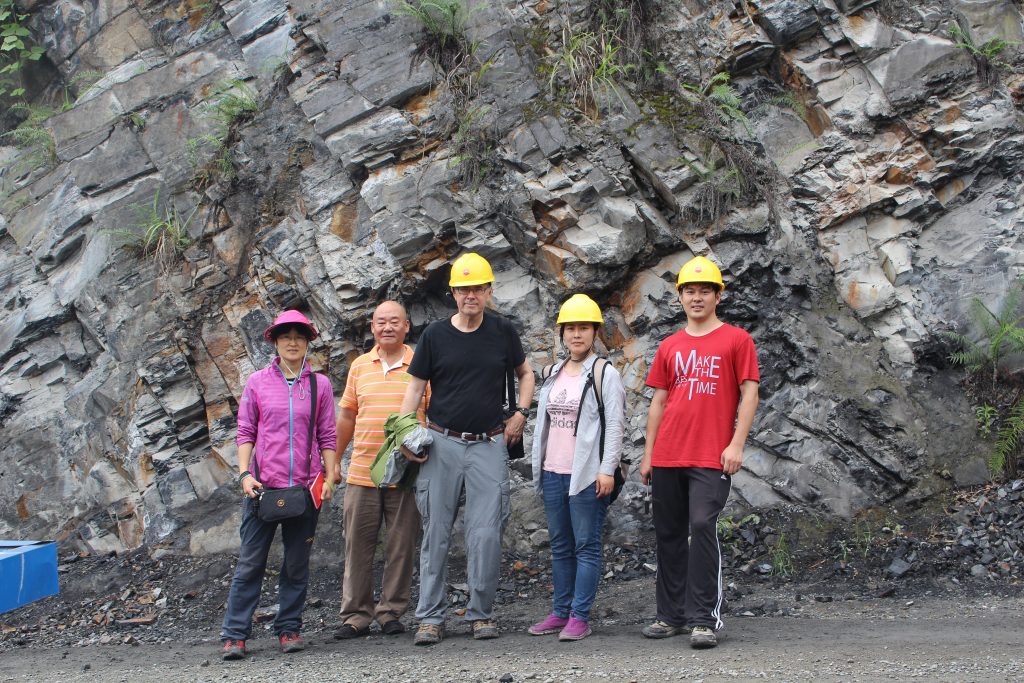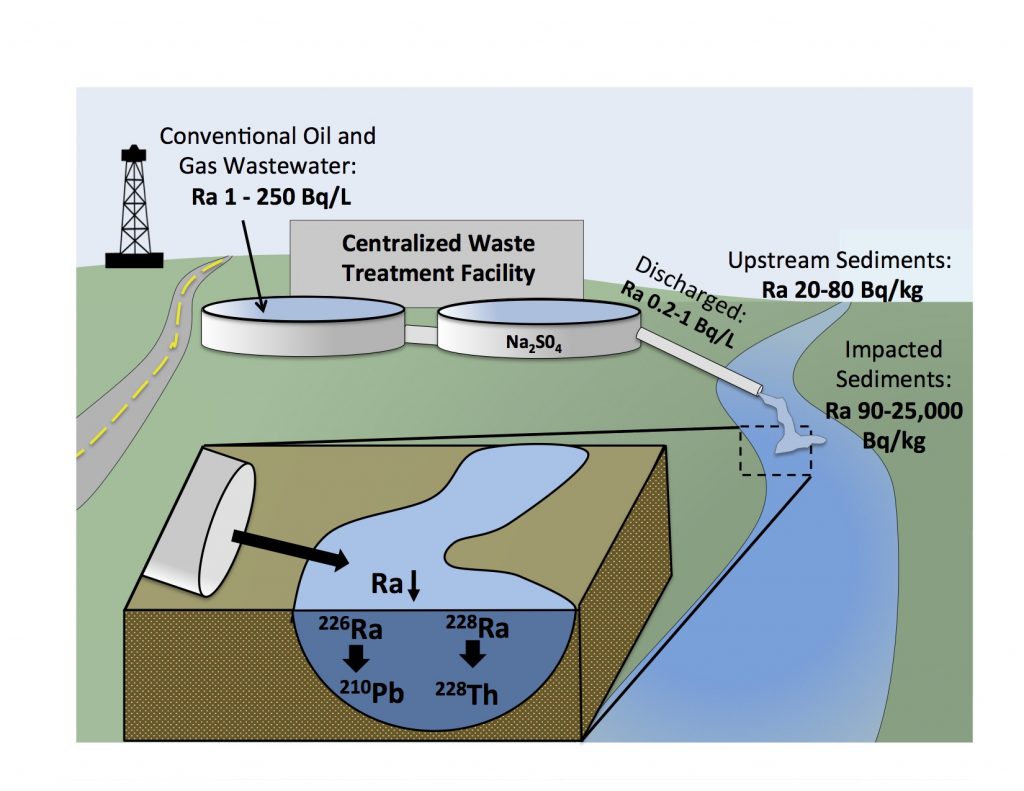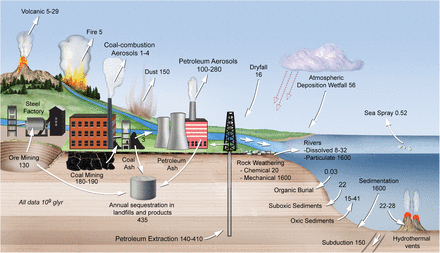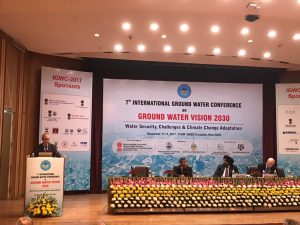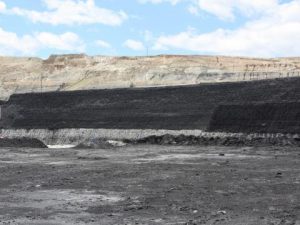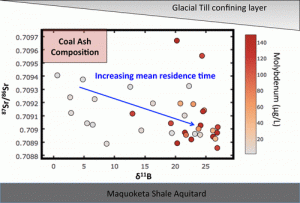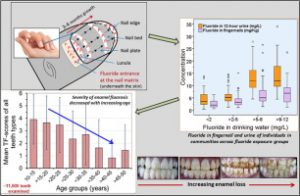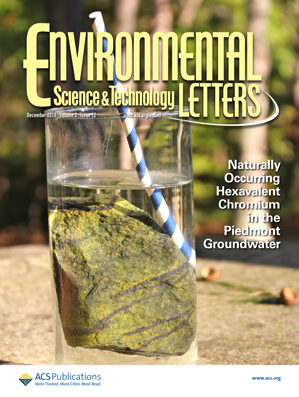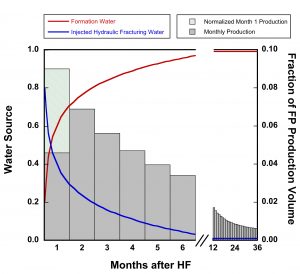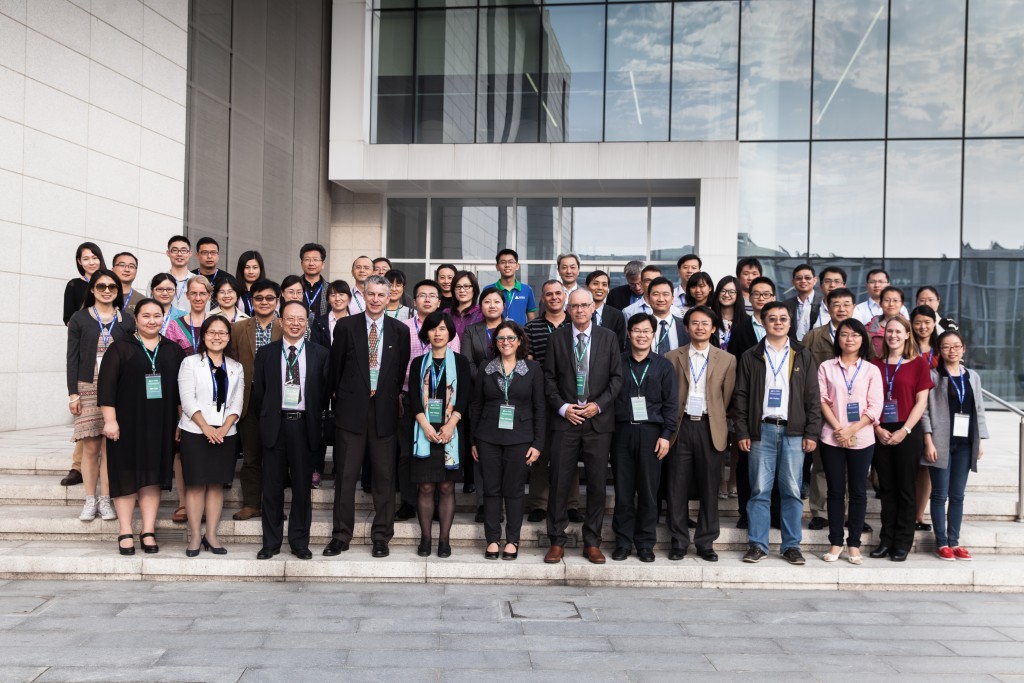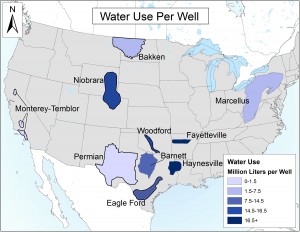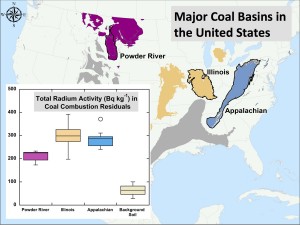2025
June 4, 2025: Avner Vengosh, together with Leanne Gilbertson will co-lead a new Critical Minerals Hub @ Duke University. This hub brings together experts from engineering and the natural and social sciences to establish an interdisciplinary platform for research and education of critical minerals. These experts will work on different angles of critical minerals and examine their full life cycle — from extraction and mining to processing, use and reuse, policy on a national and international levels — to develop a framework for managing demand and supply in the short term and reducing critical minerals dependence over the long term. The Hub will address the geopolitical, scientific, environmental, social, commercial, and technical aspects of novel solutions to ensure socio-economic benefits and added value. For more details see announcement.

May 23, 2025: A new paper “The Role of Boron in Controlling the pH of Lithium Brines,” By Gordon Williams Paz Nativ and Avner Vengosh was published Science Advances. This paper integrates fieldwork in the Salar de Uyuni in Bolivia, geochemical analyses, boron isotopes measurements, and geochemical modeling to demonstrate the role of boron in controlling alkalinity and pH of lithium brines from the Lithium Triangle in South America and Tibet, China. The paper demonstrates that the co-occurrence of boron and lithium in the arid environment of the high desert combined with the removal of carbonate ion as part of the evaporation and mineral precipitation processes generates a unique brine chemistry in which the borate becomes the predominant alkalinity species. The study demonstrates that boric acid dissociation controls the brine pH while for decades we have shown that boron species and boron isotope fractionation are controlled by pH for common natural waters with much lower boron. The paper was promoted at Duke press release “Researchers Discover Unique Chemistry in Critical Lithium Deposits” and published in SciTechdaily , IT community, Earth.

February 11, 2025: Avner Vengosh Named 2025 Recipient of Clair C. Patterson Award. The Geochemical Society announced that Avner Vengosh, Distinguished Professor of Environmental Quality at Duke University (USA) will receive the 2025 Clair C. Patterson Award in July. The award is presented annually for an innovative breakthrough in environmental geochemistry of fundamental significance within the last decade, particularly in service to society. Prof. Vengosh is recognized for his work evaluating the impact of conventional and nonconventional energy development on environmental geochemistry, especially of water resources. The Clair C. Patterson Award is presented annually for an innovative breakthrough in environmental geochemistry of fundamental significance within the last decade, particularly in service to society.

January 17, 2025: A new paper “Quality of Wastewater from Lithium-Brine Mining” by Gordon Williams and Avner Vengosh was published in Environmental Sciences and Technology Letters. This paper presents data for major and trace elements in natural brines, brines and salts from evaporation ponds, and wastewaters from a lithium processing plant at the Salar de Uyuni in Bolivia, the largest known global lithium deposit. The investigation reveals that evaporation of natural brines results in highly saline brines (TDS ≈ 360 g/kg) with low pH (3.2) and elevated concentrations of lithium, boron, and arsenic (up to ∼50 mg/kg) that could modify the chemical composition and mineral saturation upon release to the environment. The extremely high arsenic concentrations and low pH also have potential environmental impacts. In contrast, the processing plant generates saline and low-saline wastewater streams with high pH (∼10) and lower solute concentrations that could dilute the natural lithium reservoir, while the high pH limits their disposal options.
The study was reported by the Nicholas School of the Environment: Examining the Potential Environmental Effects of Mining the World’s Largest Lithium Deposit
January 1, 2025: Avner Vengosh was nominated and selected to become the new Vice President of the International Association of Geochemistry (IAGC)

2024
November 14, 2024: Symposium on Critical Resources, Minerals, and Materials Joint Efforts. Leanne Gilbertson from Pratt School of Engineering and Avner Vengosh co-organized a symposium at Duke University on different aspects of critical minerals and materials with the participation of National Security Innovation Network (NSIN), Defense Innovation Unit (DIU) of DOD, Lockheed Martin, U.S. Geological Survey, and experts from Duke University (see schedule and participants here). The symposium represented an interdisciplinary approach to critical minerals: Innovations in material design for the clean energy transition, Policy, Governance, and Communities: Secure and resilient infrastructure for critical minerals and other resources, Environmental Sustainability: Impacts of resource extraction and clean energy technologies on environmental and human health, and Education and workforce development needs and opportunities.
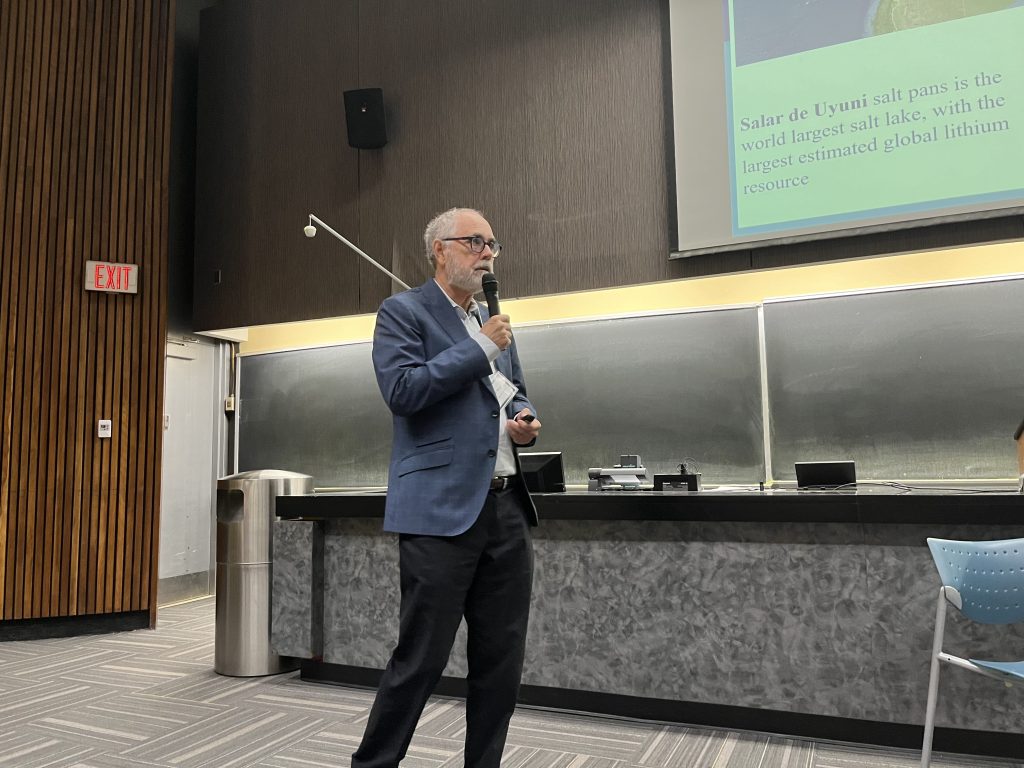
November 4, 2024: A new paper “The Potential Water Quality Impacts of Hard-Rock Lithium Mining: Insights From a Legacy Pegmatite Mine in North Carolina, USA” by Gordon Williams, Sam Saltman, Zhen Wang, Morgan Warren, Robert C. Hill, and Avner Vengosh was published in Science of the Total Environment. The new study explores the water quality of groundwater and surface water within the vicinity of legacy lithium mine in Kings Mountains in North Carolina combined with conducting leaching experiments on the lithium ore (pegmatite), waste rocks, and tailing for simulation of water-rock interactions. The study found no occurrence of regulated contaminants and no potential formation of acid rock leachates. Yet the high lithium, rubidium and cesium contents in the source rocks results in elevated levels of these elements in groundwater from the mine site, surface water downstream from the mine, and leachates extracted from the lithium ore and tailings. The study was presented in Duke press release “What Are the Effects of Historic Lithium Mining on Water Quality?” and reported in Newsweek “Abandoned North Carolina Mine Poses Possible Threat to Water Supply“, SciTechDaily.
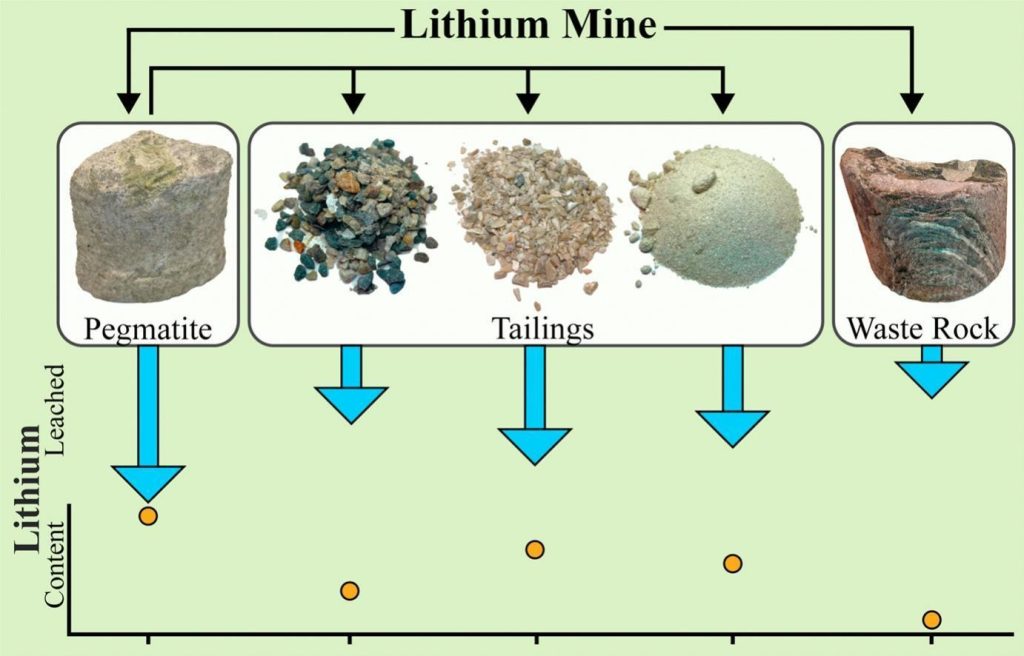
September 24, 2024: The Geological Society of America’s Geology & Health Division announced its 2024 Distinguished Career Awardee to Dr. Avner Vengosh from Duke University. Dr. Vengosh has led a distinguished career in the field of Geology and Health impacting both students and the field overall. His legacy of working with students, their continuation in the field, and the breadth of his published research speaks to the impact and importance of his work.
September 19, 2024: Avner Vengosh was interviewed to WCNC Charlotte to explain the implications of finding elevated radium nuclides in coal ash buried in surface soil near a day care in Mooresville, NC. An investigation of the soil samples by Vengosh Lab revealed elevated levels of radium, arsenic, and other carcinogens contaminants, typical of coal ash. There findings have raised alarm for the safety of the children. Following the interview, the day care announced “a complete playground renovation” for remediation and removal of the coal ash from the children.

September 16, 2024: A new paper was published in Environmental Pollution titled “Role of coal ash morphology and composition in delivery and transport of trace metals in the aquatic environment”. This study is part of NSF funding and collaboration between Appalachian State University and Duke University, integrting coal ash morphology and geochemistry. Here is the link to the paper.
June 12, 2024: A new study published in Chemical Geology titled “Reconstructing the depositional environment and diagenetic modification of global phosphate deposits through integration of uranium and strontium isotopes” investigates the geochemistry of phosphate rocks through geological time. The study, led by PhD Robert Hill measured the occurrence of trace elements and the strontium and uranium (stable and radioactive) isotopes variations in phosphate rocks from all over the world, ranging in geological ages from the Miocene to the Precambrian. The geochemistry and isotope variations of phosphate rocks from a large sample collection reveal major changes in the ocean water chemistry, suggesting anoxic conditions in the seafloor during the Precambrian. The unique conditions of phosphate ore generation resulted in accumulation of trace elements such as uranium, cadmium, and chromium in phosphate rocks, which also incorporate into phosphate fertilizers and pose environmental and human health risks. This study, funded by the NSF grant to Avner Vengosh, links the geological conditions of rock formation to possible environmental risks of utilization of phosphate fertilizers originated from phosphate rocks. Here is the link to the paper
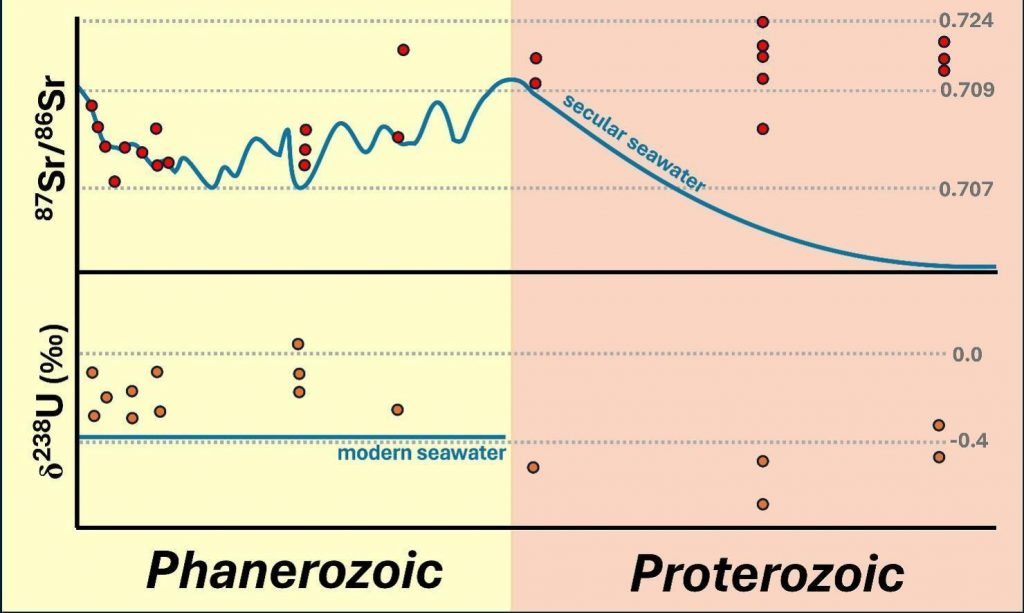
May 9, 2024: Our paper “Tracing the Environmental Effects of Mineral Fertilizer Application with Trace Elements and Strontium Isotope Variations” was published in Environmental Science and Technology Letter. The paper provides new data on the levels of toxic trace elements such as cadmium, uranium, and chromium in global phosphate rocks and associated fertilizers. The new NSF-supported study presents a new isotope method to enable detecting the source and impact of phosphate fertilizers in the environment. Duke has issued a press release that describes the new study. The summary of the news items on this study are here.

2023
December 11-14, 2013: PhD students Gordon Williams and Robert Hill presented their papers at the AGU meeting in San Fransisco, California. Gordon presented his paper “Potential Water Quality Impacts of Hard-Rock Lithium Mining” and Robert presented his paper “Reconstructing the Depositional and Diagenetic Conditions of Global Phosphate Rock Through Stable Uranium and Strontium Isotopes “

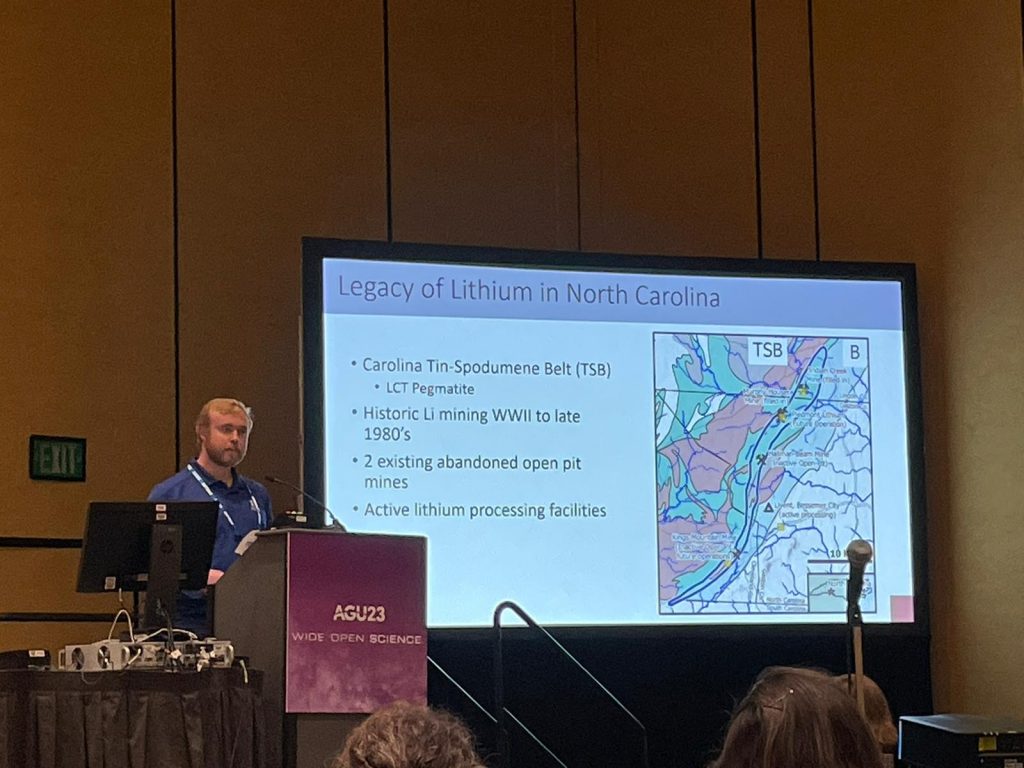
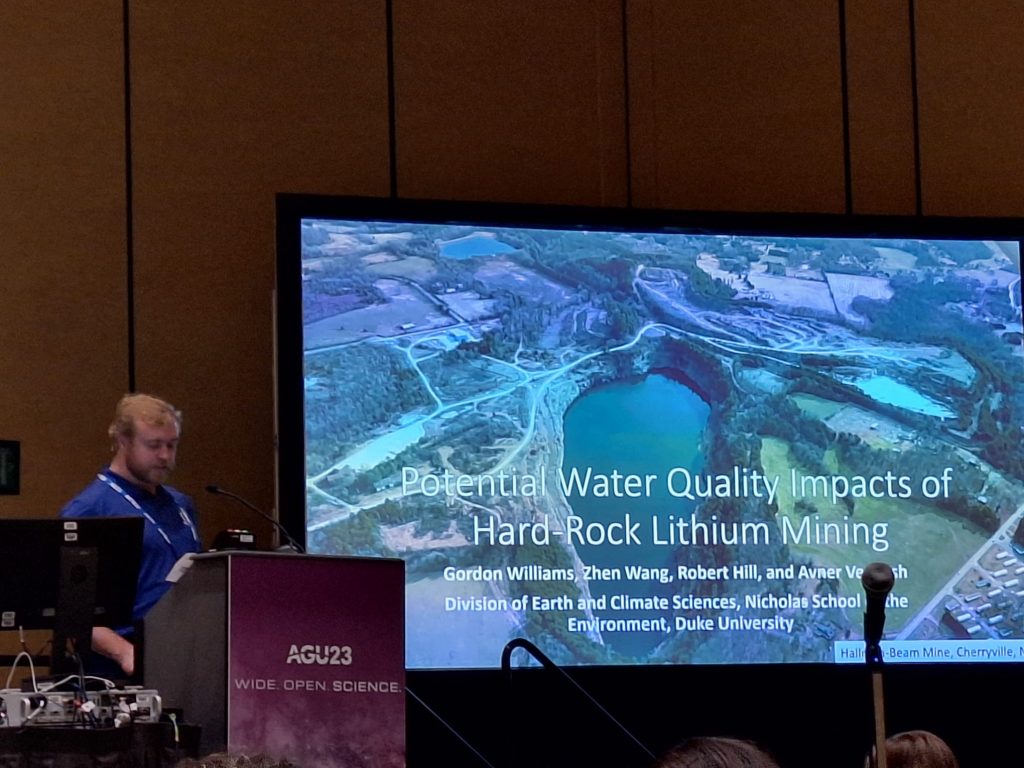
December 8, 2013: The Division of Earth and Climate Sciences faculty and students celebrated the end of the year through PhD poster presentation. Gordon Willimas and Robert Hill presented their PhD posters on the environmental effect of hard rock lithium mining and the geochemical and Sr and U isotopes variations of phosphate rocks through time.

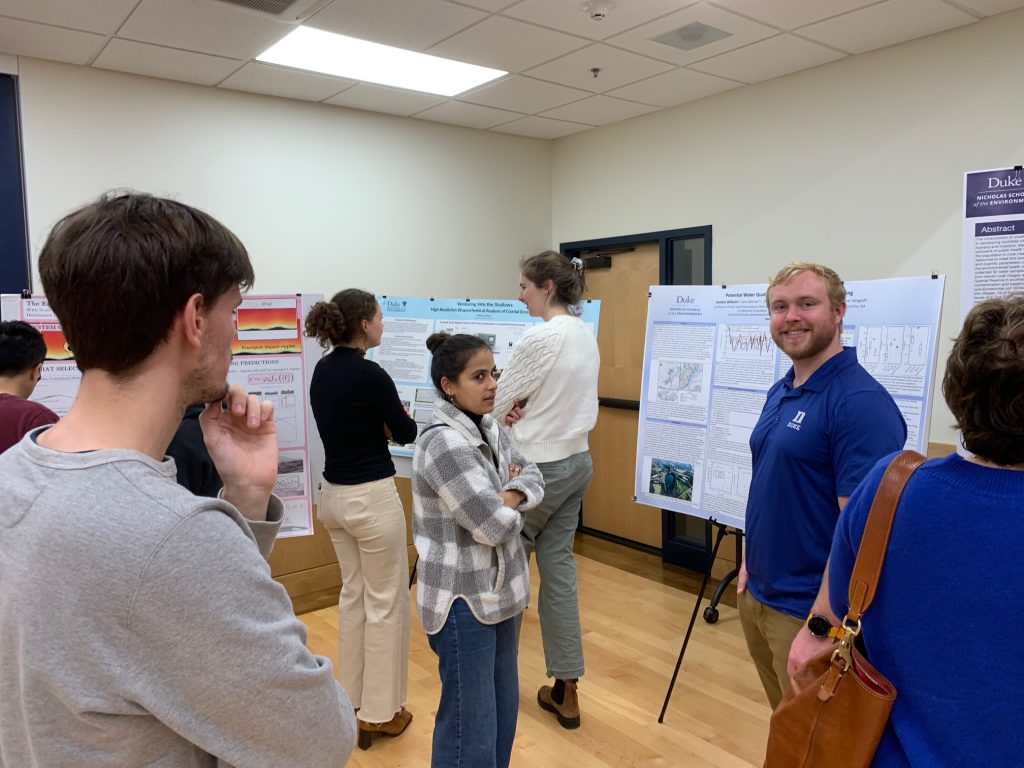
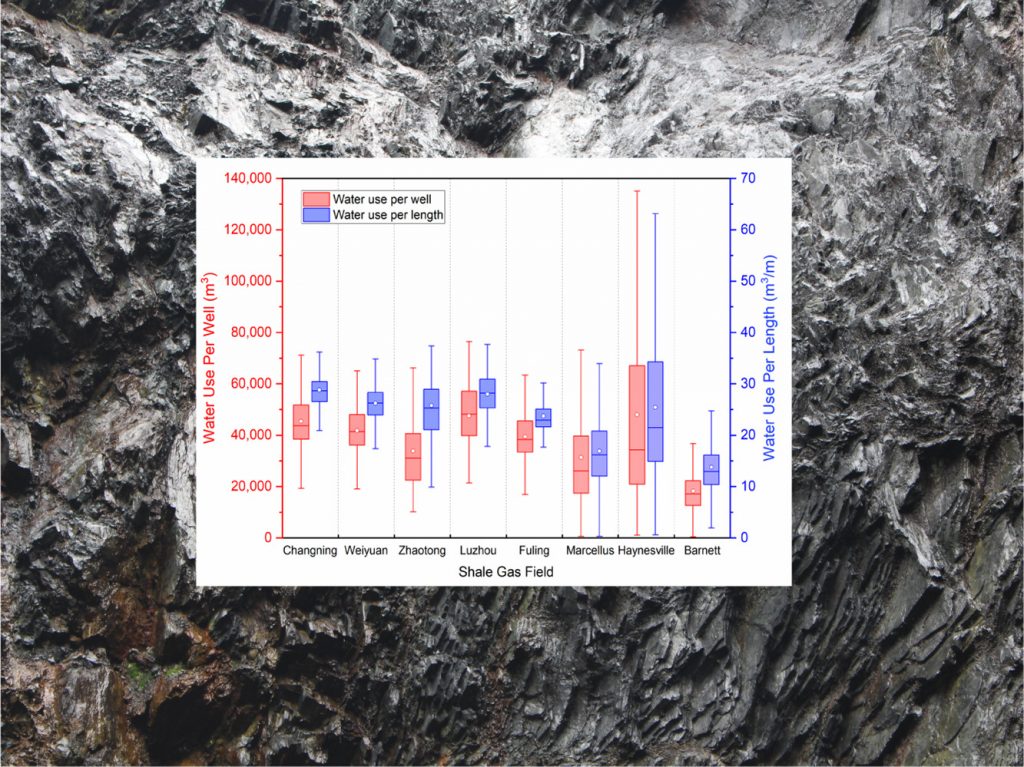
October 24, 2013: A new study titled “The water footprint of hydraulic fracturing for shale gas extraction in Chin” was published in the Science of the Total Environment. The study presents an updated evaluation of the volumes of water use and wastewater generation from hydraulic fracturing wells for the majority of shale gas extraction in China. The paper show that recycling of the flowback water has increasingly utilized for hydraulic fracturing and that water intensity for hydraulic fracturing in China is typically higher than in the U.S. Yet, projected water use into the next decades do not show a meaningful impact on water resources in Sichuan Basin. This paper is part of a collaboration between the Vengosh group and the PetroChina Research Institute of Petroleum Exploration and Development.
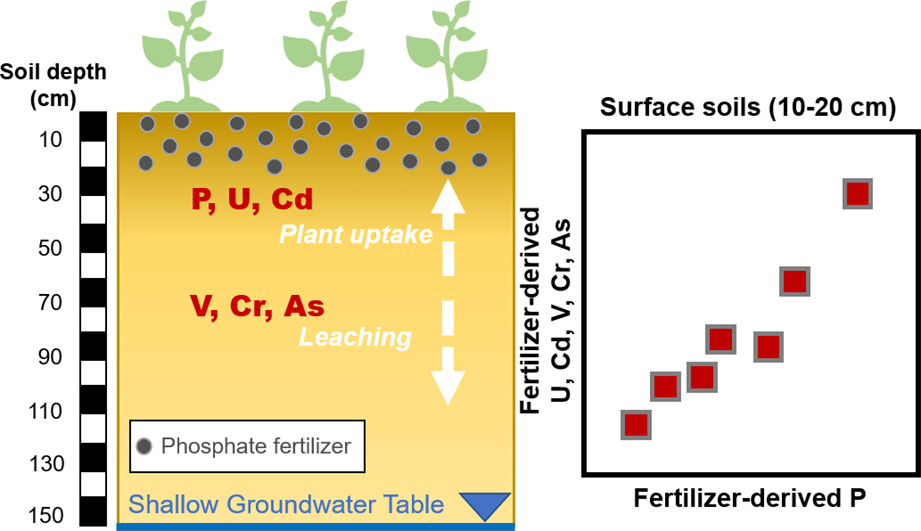
October 13, 2023: A new paper titled “Evidence for the accumulation of toxic metal(loid)s in agricultural soils impacted from long-term application of phosphate fertilizer” was published in Science of the Total Environment. The new study explores the impact of long-term utilization of phosphate fertilizers on the accumulation of metals and metalloids in agriculture soils. The results show relatively high concentrations of metals and metalloids levels in topsoil, including the plant-available fraction within the soil, implying high potential of bioaccumulation in plants specifically for some toxic metals like cadmium. This study is funded by NSF grant “From Global to Local: Geochemistry of Global Phosphate Ores and Implications for Tracing the Environmental Impacts of Fertilizers Utilization (EAR 2305946; $433,480 PI Avner Vengosh) with collaboration with NC State University.
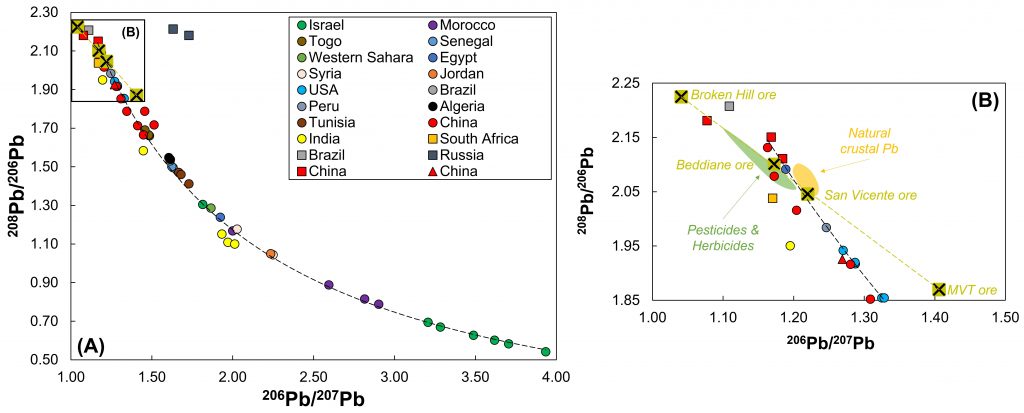
September 11, 2023: A new paper titled “Lead isotopes and rare earth elements geochemistry of global phosphate rocks: Insights into depositional conditions and environmental tracing” (https://www.sciencedirect.com/science/article/abs/pii/S0009254123004151) was published in Chemical Geology. This paper was part of the PhD thesis of Zhen Wang (lead author, graduated in May 2023, now postdoc in Monash University in Australia) with co-authorship of current PhD students Robert Hill and Gordon Williams from Vengosh Lab. The paper is the first to systematically report the lead isotopes and rare-earth elements distribution in phosphate rocks from major global phosphate mines as well as phosphate fertilizers as novel diagnostic tracers for reconstruction the geological conditions of phosphate rocks formation and delineating the possible environmental effects of using phosphate fertilizers. This study lay the foundation for a funded NSF project “From Global to Local: Geochemistry of Global Phosphate Ores and Implications for Tracing the Environmental Impacts of Fertilizers Utilization (EAR 2305946; $433,480 PI Avner Vengosh) with collaboration with NC State University.
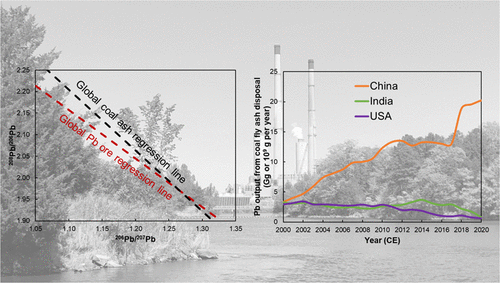
August 9, 2023: A new paper titled “Isotopic Signatures and Outputs of Lead from Coal Fly Ash Disposal in China, India, and the United States” was published in Environmental Science and Technology. The study evaluates the Pb flux on coal ash disposal and utilizers the Pb isotopes in coal ash to demonstrate the ability to delineate lead source from coal ash relative to other anthropogenic lead sources.
2022
August 7, 2022: A new study tiled “The strontium isotope fingerprint of phosphate rocks mining“ by Avner Vengosh, Zhen Wang, Gordon Williams, Robert Hill, Rachel Coyte, Gary S Dwyerwas published in Science of the Total Environment. This study proposes to use using strontium isotopes as a tracer to determine possible water quality impacts induced from phosphate mining and fertilizers production. The study utilized a regional case study in the northeastern Negev in Israel, where salinization of groundwater and a spring have been attributed to historic leaking and contamination from an upstream phosphate mining wastewater. This study presents a comprehensive dataset of major and trace elements, combined with Sr isotope analyses of the Rotem phosphate rocks, local aquifer carbonate rocks, wastewater from phosphate operation in Mishor Rotem Industries, saline groundwater suspected to be impacted by Rotem mining activities, and two types of background groundwater from the local Judea Group aquifer. The results of this study indicate that trace elements that are enriched in phosphate wastewater were ubiquitously present in the regional and non-contaminated groundwater at the same levels as detected in the impacted waters, and thus cannot be explicitly linked to the phosphate wastewater. The 87Sr/86Sr ratios of phosphate rocks (0.707794 ± 5 × 10−5) from Mishor Rotem Industries were identical to that of associated wastewater (0.707789 ± 3 × 10−5) indicating that the Sr isotopic fingerprint of phosphate rocks is preserved in its wastewater. The 87Sr/86Sr (0.707949 ± 3 × 10−6) of the impacted saline groundwater were significantly different from those of the Rotem wastewater and the background saline groundwater, excluding phosphate mining effluents as the major source for contamination of the aquifer. Instead, the 87Sr/86Sr ratio of the impacted water was similar to the composition of brines from the Dead Sea, which suggests that the salinization was derived primarily from industrial Dead Sea effluents with distinctive Sr isotope and geochemical fingerprints.
February 24, 2022: The new book “Water Quality Impacts of the Energy-Water Nexus” by Avner Vengosh and Erika Weinthal was published in Cambridge University Press and is available on Amazon.
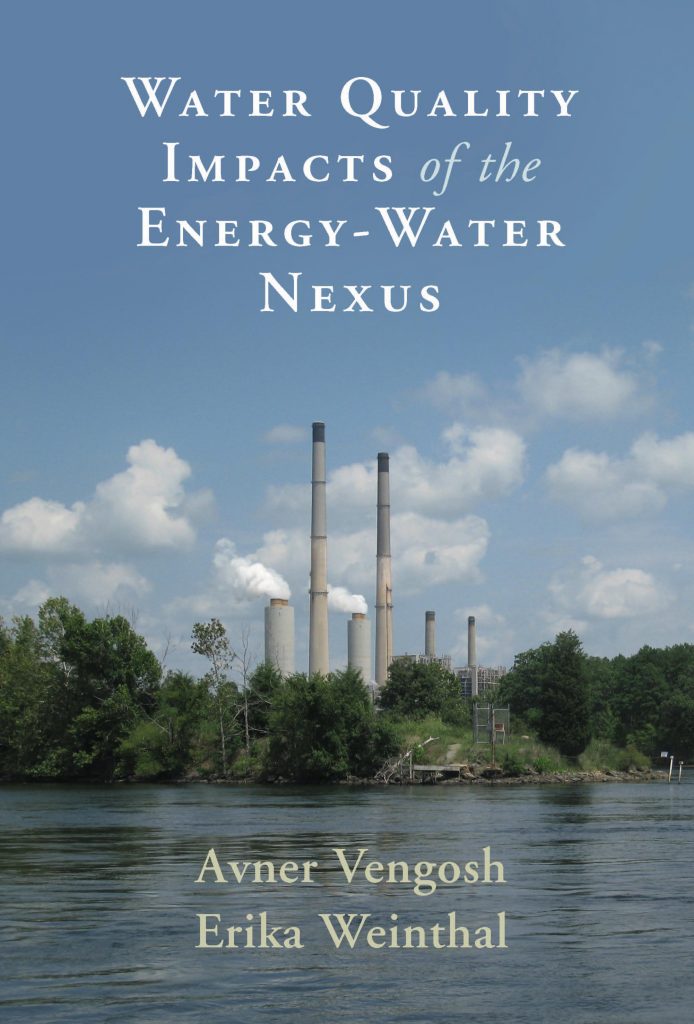

Book description: Energy and water have been fundamental to powering the global economy and building modern society. This cross-disciplinary book provides an integrated assessment of the different scientific and policy tools around the energy-water nexus. It focuses on how water use, and wastewater and waste solids produced from fossil fuel energy production affect water quality and quantity. Summarizing cutting edge research, it describes the scientific methods for detecting contamination sources in the context of policy and regulations. The authors highlight the growing evidence that fossil fuel production, from both conventional and unconventional sources, leads to water quality degradation, while regulations for the water and energy sector remain fractured and highly variable across and within countries. This volume will be a key reference for scholars, industry professionals, environmental consultants and policy makers seeking information on the risks associated with the energy cycle and its impact on the environment, particularly water resources.
Duke Press Release: Fossil Fuel Energy’s Cumulative Water Footprint Quantified in New Book
February 20, 2022: A new review paper “A critical review on the occurrence and distribution of the uranium- and thorium-decay nuclides and their effect on the quality of groundwater” by Avner Vengosh, Rachel M Coyte, Joel Podgorski, Thomas M Johnson was published in Science of the Total Environment. This critical review presents the key factors that control the occurrence of natural elements from the uranium- and thorium-decay series, also known as naturally occurring radioactive materials (NORM), including uranium, radium, radon, lead, and polonium, and their isotopes in groundwater resources. Given their toxicity and radiation, elevated levels of these nuclides in drinking water pose human health risks, and therefore understanding the occurrence, sources, and factors that control the mobilization of these nuclides from aquifer rocks is critical for better groundwater management and human health protection.
2021
November 16, 2021: Avner Vengosh was among the 38 Duke faculty were named to the list of the most cited researchers for 2021, based on the number of highly cited papers they produced During 2020. Citation rate, as tracked by Clarivate’s Web of Science, is an approximate measure of a study’s influence and importance. This is the third year in a raw that Vengosh is included in this list.
October 27, 2021: A new study tiled “Legacy of anthropogenic lead in urban soils: Co-occurrence with metal(loids) and fallout radionuclides, isotopic fingerprinting, and in vitro bioaccessibility” was published in Science of the Total Environment. The new study led by PhD student Zhen Wang explores the metals occurrence and lead isotope ratios of soils from Durham North Carolina for detecting the sources of lead contamination, the relationships between lead and other metals like cadmium in the soils, the timing of contamination induced from nuclear atmospheric fallout Cs-137, and the bioavailablity of lead and other metals upon exposure to the contaminated soils. Here is Duke Press release: New Tests Track Source of lead contamination in urban soils and assess its risks.
July 20, 2021: A new paper titled “Evaluation and Integration of Geochemical Indicators for Detecting Trace Levels of Coal Fly Ash in Soils” was published in Environmental Science and Technology. The integration of 4 independent methods, including trace elements that are highly abundant on fly ash, stable lead isotopes, radium nuclide ratios, and physical observation under the microscope provides a new method to detect even small levels of fly ash in soil. Fly ash was identified in soils located downwind from coal plants in North Carolina and Tennessee. See Duke Press Release: New Tests Can Detect Tiny but Toxic Particles of Coal Ash in Soil. The study was reported by the Radio Show Charlotte@Six; EnergyWord; NC Progressive Puls; Knox News, Charlotte Observer, WVLT-8, NRDC, PowerHome

June 28, 2021: Avner Vengosh was awarded Duke University Distinguished Professor of Environmental Quality. Duke University has awarded distinguished professorships to 22 faculty members representing seven Duke colleges and schools. For more on the updated Vengosh group research see here
April 14, 2021: A new paper tiled “Multiple geochemical and isotopic (Boron, Strontium, Carbon) indicators for reconstruction of the origin and evolution of oilfield water from Jiuquan Basin, Northwestern China” was published in Applied Geochemistry. The new study used a wide range of geochemical and isotopic tracers to evaluate the origin and reconstruct the migration of oilfield water across Jiuquan Basin, which is one of the richest oil basins in China and holds large potential for future tight oil exploration. The integration of multiple geochemical tracers provides systematic geochemical criteria’s for reconstructing the origin and evolution of the oilfield water in Jiuquan Basin and the ability to distinguish between the original composition and secondary modification of the geochemistry of the oilfield water.
March 18, 2021: A new paper titled “Geochemical evidence for fugitive gas contamination and associated water quality changes in drinking-water wells from Parker County, Texas” was published in Science of the Total Environment. The new study present a comprehensive geochemical dataset collected across three sampling campaigns along with integration of previously published data. Data include major and trace ions, molecular gas compositions, compound-specific stable isotopes of hydrocarbons (δ13C-CH4, δ13C-C2H6, δ2H-CH4), dissolved inorganic carbon (δ13C-DIC), nitrogen (δ15N-N2), water (δ18O, δ2H, 3H), and noble gases (He, Ne, Ar), boron (δ11B) and stontium (87Sr/86Sr) isotopic composition of water samples from 20 drinking-water wells from the Trinity Aquifer in Parker County, Texas. A subset of drinking-water wells contains elevated levels of hydrocarbons and depleted atmospherically-derived gas tracers, which is consistent with the introduction of fugitive thermogenic gas. The results suggest that gas originating from the intermediate-depth Strawn Group (“Strawn”) is flowing along the annulus of a Barnett Shale gas well, and is subsequently entering the shallow aquifer system. Our data suggest post-genetic secondary water quality changes occur following fugitive gas contamination, including sulfate reduction paired with hydrocarbon oxidation and secondary methanogenesis.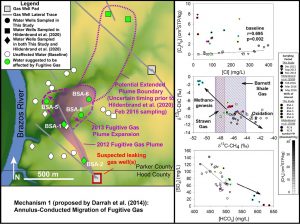
2020
December 15, 2020: A story of merging coal ash and nuclear wastes in Kingston Tennessee, published in Grist: A Legacy of Contamination: How the Kingston coal ash spill unearthed a nuclear nightmare.
November 18, 2020: Avner Vengosh was among the thirty-seven Duke faculty were named to the list of the most cited researchers for 2020, based on the number of highly cited papers they produced over an 11-year period from January 2009 to December 2019. Citation rate, as tracked by Clarivate’s Web of Science, is an approximate measure of a study’s influence and importance. This is the second year in a raw that Vengosh is included in this list.
October 22, 2020: A new paper “Global Biogeochemical Cycle of Fluorine” was published in Global Biogeochemical Cycles. This review paper provides a synthesis of what is currently known about the natural and anthropogenic fluxes of fluorine on Earth, offering context for an evaluation of the growing environmental impact of human-induced F mobilization and use. The largest flux of F at the Earth’s surface derives from the mobilization of F during chemical (2.2 Tg F/yr (where 1 Tg = 1012 g) and mechanical (7 Tg F/yr) weathering of rocks. Humans supplement these fluxes by mining fluorospar and apatite ores to make a variety of industrial chemicals and fertilizers, mobilizing 2.9 and 7.6 Tg F/yr, respectively. Other large anthropogenic fluxes derive from the manufacture of bricks (1.8 Tg F/yr) and extraction of groundwater (0.9 to 1.7 Tg F/yr). Rivers deliver ~3.6 Tg/yr of dissolved fluoride to the oceans, where the mean residence time of dissolved F in seawater is ~500,000 yr. F is removed from the oceans by the deposition of terrigenous (4.3 Tg F/yr) and authigenic sediments (1.24 Tg F/yr), and approximately 10 Tg F/yr is removed from the surface of the Earth by subduction of the oceanic lithosphere. Humans have increased the flux of F to the atmosphere and in rivers by more than a factor of 2, with the largest impacts stemming from the use of phosphorus fertilizers, the production of brick, and extraction of groundwater.
September 3, 2020: A new paper entitled ” Endocrine disrupting activities and geochemistry of water resources associated with unconventional oil and gas activity” was published in Science of the Total Environment. The new study with collaboration with University of Missouri investigated the relationships between endocrine bioactivities and geochemical tracers in groundwater and surface water near oil and gas wells in Colorado. Elevated endocrine activities were observed in surface water associated with extensive oil and gas production, but not with associated spills, and often did not exhibit geochemical profiles associated with oil and gas wastewater. the apparent conflicting results suggest the potential for releases of low-saline hydraulic fracturing fluids or chemicals used in other aspects of unconventional oil and gas production, similar to the chemistry of the local water, and dissimilar from defined spills of post-injection saline wastewater.
July 16, 2020: A new paper entitled “High Hexavalent Chromium Concentration in Groundwater from a Deep Aquifer in the Baiyangdian Basin of the North China Plain” was publish in Environmental Science and Technology. The collaboration study with China University of Geosciences in Beijing reveals high concentrations of hexavalent chromium in deep groundwater in one of the most important aquifer systems of northeastern China, home to the future second capital city of China. Unlike previous studies that have shown high hexavalent chromium only in shallow groundwater, this study demonstrates the potential geogenic occurrence of high hexavalent chromium in deep groundwater from a large sedimentary basin containing manganese oxides in the aquifer sediments.
May 18, 2020: A new paper entitled “The impact of using low-saline oilfield produced water for irrigation on water and soil quality in California” was publish Science of the Total Environment. The paper evaluated, for the first time, the impact of long-term irrigation of using oilfield water on water and soil quality in Central Valley, California. While the quality of the low-saline oilfield water in Kern County of Central Valley is high and similar to the quality of local groundwater, the study found accumulation of boron and salts in soils irrigated by oilfield water as compared to soils irrigated by the local groundwater. The study rules out concerns of accumulation of radioactive elements in the soil and shows that the salinity is an important factor in controlling the overall quality of oilfield water. The low-saline oilfield water from Kern County is very different from common oilfield water in other oilfields in California and the U.S. Duke University issues a press release: Can Oilfield Water Safely be Reused for Irrigation in California? This study was part of a USDA-NIFA funded project with collaboration between Duke University, RTI International, California State University at Bakersfield, and Pacific Institute. For more information see the project web site.
April 28, 2020: Congrats to Zhen Wang, his the peer-reviewed study, “Lead Isotopes as a New Tracer for Detecting Coal Fly Ash in the Environment,” which was published Oct. 16, 2019, in the journal Environmental Science & Technology Letters was receives the 2020 Nicholas School Dean’s Award for the Best Graduate Student Manuscript.
April 15, 2020: A new paper entitled “Recycling flowback water for hydraulic fracturing in Sichuan Basin, China: Implications for gas production, water footprint, and water quality of regenerated flowback water” was published in Fuel. Recycling of the flowback and produced water for hydraulic fracturing is one of the solutions for reducing the water footprint of hydraulic fracturing and removing highly saline oil and gas wastewater. This is the first study to evaluate the implications of using recycled saline flowback water for hydraulic fracturing of new shale gas wells. As part of collaboration with PetroChina, this study investigates the volume of shale gas and the volume and the geochemistry of flowback and produced water generated from shale gas wells with different sources of water used for hydraulic fracturing in Sichuan Basin, China. The study found lower (~20%) natural gas production and higher flowback water volume (~18%) in wells that were fracked with recycled saline wastewater relative to wells that were fracked with fresh water after a year of production. Geochemical analysis suggests that hydraulic fracturing with saline wastewater increases the salinity of the wastewater and reduces the magnitude of water-shale rock interactions. In spite of the direct economic consequences in reduction in natural gas production from recycling of wastewater for hydraulic fracturing, in areas where water scarcity could become a limiting factor for future large-scale shale gas development, hydraulic fracturing with recycled flowback water can be more beneficial than utilization of limited freshwater resources, as long as the higher saline flowback water is fully recycled.
April 1, 2020: A new paper entitled “Distinction of strontium isotope ratios between water-soluble and bulk coal fly ash from the United States” was published in International Journal of Coal Geology. The paper shows that the strontium isotope ratios of bulk fly ash is higher than water-soluble Sr in fly ash derived from coals of the three major coal-producing basins in the U.S., the Appalachian Basin, Illinois Basin, and Powder River Basin. These isotopic differences most likely reflect the different mineralogical compositions of the studied fly ash and the differential solubility of carbonate phases with low strontium isotope ratios relative to more radiogenic silicate phases in fly ash. The distinction between the strontium isotope ratios of bulk fly ash versus water-soluble fly ash is important, as it refines the application of strontium isotopes as a forensic tracer for tracking coal ash spills and contamination in the environment.
March 13, 2020: A new paper entitled “Factors Controlling the Risks of Co-occurrence of the Redox-Sensitive Elements of Arsenic, Chromium, Vanadium, and Uranium in Groundwater from the Eastern United States” was published in Environmental Science and Technology. This paper explores the co-occurence of redox-sensitive elements of arsenic, uranium, vanadium, and chromium in groundwater across North Carolina. The highest concentrations of these elements were measured mostly in groundwater from fractured igneous and metamorphic formations throughout the Piedmont region. In addition to the local aquifer geology, the pH and redox conditions of groundwater control the occurrence of these elements. Due to similar geochemistry, vanadium and chromium co-occurred most frequently. Concentrations of vanadium and hexavalent chromium co-exceeded health recommendations from the NC Department of Health and Human Services in up to 84% of wells from the King’s Mountain Belt and the Charlotte and Milton Belts of the Piedmont region. This study highlights the large gap between health recommendations and enforceable regulations and demonstrates a degree of co-occurrence between redox-sensitive elements, which may pose additional risks to groundwater-reliant individuals. See Duke press release.
January 21, 2020: Avner Vengosh interview to Duke University Chronicle on “Duke Energy settlement results in the country’s largest coal ash cleanup“
January 15, 2020: A new paper entitled “Hydrochemistry of flowback water from Changning shale gas field and associated shallow groundwater in Southern Sichuan Basin, China: Implications for the possible impact of shale gas development on groundwater quality” was published in the Journal Science of the Total Environment. The study examines possible groundwater contamination near shale gas wells in Sichuan basin, China by using sensitive geochemical tracers to track possible groundwater contamination derived from shale gas flowback and produced waters.
January 7, 2020: Avner Vengosh was interviewed at the NPR show State of Things on the settlement that was reached with Duke Energy to remove coal ash ponds in North Carolina: “Sorry to spoil the party, the game is not over” See; NPR show “Duke Energy And NC Reach A Settlement Over Nearly 80 Million Tons Of Coal Ash”
2019
November 19, 2019: Avner Vengosh was named to the list of Highly Cited Researchers for 2019 that includes 54 of Duke’s most prominent and influential researchers. Recognizing the world’s most influential researchers of the past decade, demonstrated by the production of multiple highly-cited papers that rank in the top 1% by citations for field and year in Web of Science. See Duke press release here.
November 13, 2019: A new paper titled “Occurrence and distribution of hexavalent chromium in groundwater from North Carolina, USA” was published in Science of the Total Environment. Hexavalent chromium (Cr(VI)) is a groundwater contaminant that is potentially harmful to human health. Understanding the occurrence of Cr(VI) in groundwater resources is critical for evaluating its risks to human health. This study confirms that Cr(VI) is the predominant species of dissolved Cr and that groundwater from aquifers in the Piedmont region contain significantly higher concentrations than groundwater from the coastal plain. Though there is only one exceedance of the U.S. EPA Maximum Contaminant Level (100 mg/L for CrT) in the dataset, over half of all wells measured for Cr(VI) (470 out of 865) in the dataset exceeded the N.C. Health Advisory Level of 0.07 µg/L. While this study focuses on N.C., the wide-spread occurrence of Cr(VI) in groundwater at concentrations above health guidelines in aquifers of the Piedmont region could pose high human health risks to large populations in the eastern U.S. The paper was reported in Duke press release and published in NPR, WFDD, NSF Research news, Triangle Business Journal, the Progressive Pulse,
October 16, 2019: A new paper titled “Lead isotopes as a new tracer for detecting coal fly ash in the environment” was published in Environmental Science and Technology Letters. This is the first study to systematically characterize the stable lead isotope ratios in fly ash derived from coals from the three major coal-producing basins in the United States. The lead isotopic signature of fly ash is distinguishable from that of major anthropogenic lead sources in the United States, including leaded gasoline and paint, as well as the lead isotope ratios of naturally occurring sediments and soils. Lead isotopic analysis of sediments from Sutton Lake in North Carolina, where other indicators have identified the occurrence of fly ash solids from unmonitored coal ash spills, shows a well-defined mixing between the Pb of unimpacted sediments and that of Appalachian Basin fly ash. This result further validates the applicability of lead isotopes as a new tracer for detecting the occurrence of coal fly ash in the environment. The study was reported in Duke press release, and was published in multiple media outlets.
October 14, 2019: A new paper titled “Quantification of the water-use reduction associated with the transition from coal to natural gas in the U.S. electricity sector” was published in Environmental Research Letters. This study quantifies the water footprint of the transition from coal to natural gas and renewable energy sources in the U.S. electricity sector. We show that in spite of the rise of water use for hydraulic fracturing, during 2013-2016 the overall annual water withdrawal (8.74×1010 cubic meter) and consumption (1.75×109 cubic meter) for coal were larger than those of natural gas (4.55×1010 m3, and 1.07×109 m3, respectively). We find that during this period, for every MWh of electricity that has been generated with natural gas instead of coal, there has been a reduction of ~one cubic meter in water consumption and ~40 cubic meter in water withdrawn. Examining plant locations spatially, we find that only a small proportion of net generation takes place in water stressed areas, while a large proportion of both coal (37%) and natural gas (50%) are extracted in water stressed areas. We also show that the growing contribution of renewable energy technologies such as wind and solar will reduce water consumption at an even greater magnitude than the transition from coal to natural gas, eliminating much of water withdrawals and consumption for electricity generation in the U.S. The study was reported in Duke press release, and was published in multiple media outlets.
October 2, 2014: Avner Vengosh testified on the harmful effects of coal ash and the risks of softening the 2015 EPA coal ash rules at an EPA hearing in Arlington, Va. Here is the text of the testimony.Vengosh comments on EPA Phase 2 Amendments_final This was covered by Duke press release, the News and Observer, Sierra Magazine, North Carolina Health News, Coastal Review Online, S&P Global, Waste 360, ABC News, Indiana Environmental Reporter, Utility Dive, Futurity, WFEA radio, Star Tribune,
September 24, 2019: A new paper titled “Disinfection byproducts in Rajasthan, India: Are trihalomethanes a sufficient indicator of disinfection byproduct exposure in low-income countries” was published in Environmental Science and Technology. This study investigated the occurrence of disinfection byproducts (DBPs) in drinking water in two mag cities in northwestern India, Jaipur and Jodhpur and found that the common DBP – trihalomethanes (THM4) that is commonly used and regulated as an indicator of overall DBP exposure in many countries is not correctly reflecting the presence of other toxic DBPs in teh drinking water. We show that the use of impaired water sources contaminated by domestic wastewater can decouple the formation of THM4 from other DBP classes that are more potent toxins. The analyses of THM4 and 21 unregulated DBPs in tap waters and laboratory-treated source waters showed that DBP group of haloacetonitriles typically were the dominant contributor, while the contribution of THM4 was negligible. The total toxic DBP concentrations in some waters were elevated compared to conventional drinking waters in high-income countries and more closely resembled chlorine-disinfected wastewater effluents. Artificial sweeteners confirmed widespread contamination of both surface and groundwaters by domestic sewage. The results suggest that THM4 may not be an adequate indicator of overall DBP exposure in impaired water supplies prevalent in some low-income nations. This study highlights the trade-off between disinfection and pathogen control versus the formation of toxic DBPs because of this disinfection and the additional risks of wastewater contamination of water resources in India and elsewhere.
May 24, 2019: A new paper titled “Evidence for Unmonitored Coal Ash Spills in Sutton Lake, North Carolina: Implications for Contamination of Lake Ecosystems” was published in Science of the Total Environment. This is the first time that coal ash solids were found in an open recreation lake outside of coal ash storage site. Duke University issued a press release and the report was published in many media outlets, including the New York Times, the Progressive Pulse, Coastal Review Online, News and Observer, and others. Here is a copy of the paper.SOTE_Evidence for unmonitored coal ash spills in Sutton Lake
April 9, 2019: Editor’s Choice for the Best Papers Published in ES&T Letters in 2018:
Our paper “Large-scale Uranium Contamination of Groundwater Resources in India” was selected as one of the best papers for 2018 in Environmental Science & Technology Letters. acs.estlett.9b00161
2018
August 15, 2018: A new paper “ The intensification of the water footprint of hydraulic fracturing” was publish in Science Advances. The paper shows that the water use for hydraulic fracturing and wastewater production in major shale gas and oil production regions has increased; from 2011 to 2016, the water use per well increased up to 770%, while flowback and produced water volumes generated within the first year of production increased up to 1440%. The water-use intensity (that is, normalized to the energy production) increased ubiquitously in all U.S. shale basins during this transition period. The steady increase of the water footprint of hydraulic fracturing with time implies that future unconventional oil and gas operations will require larger volumes of water for hydraulic fracturing, which will result in larger produced oil and gas wastewater volumes. The paper can be downloaded here: Science Advances_ intensification of the water footprint of Hydraulic fracturing
Duke University issued a press release and the study was covered in many newspaper and media outlets, including the Independent, Inside Climate News, Huffpost, Trueout, Popular Science, Desmong, State Impact Pennsylvania, Xinhua, The Weather Channel, Digital Journal, Think Progress, Futurity, Axion, Water World, EcoWatch, Mother Jones, Nation of Change,
July 15, 2018: Our paper entitled “The geochemistry of naturally occurring methane and saline groundwater in an area of unconventional shale gas development”, which was published in 2017 in Geochimica et Cosmochimica Acta, (vol. 208, p. 302-334) was selected to be the winner of TSOP’s prestigious Dalway Swaine Award for 2018. This award is given by the Society for Organic Petrology in recognition of the best refereed paper in Coal and Hydrocarbon Source Rock Geochemistry. Here is a copy of the paper.GCA_Groundwater in WV
July 11, 2018:Avner Vengosh gave a keynote presentation at the British Hydrogeologist Group in the conference “Use of the deep subsurface in the UK: what are the Implications for groundwater resources?” held in London, UK. For the conference program, see here.
June 24, 2018: Avner Vengosh gave an invited talk entitled “The Origin of Hydraulic Fracturing Fluids” at the Gordon Research Conference “ Innovations at the Intersections of the Aquatic Sciences: Water Quality, Health, Materials, Technologies”, at Holderness, New Hampshire. For more information on the conference see here.
June 7, 2018: A new study shows large-scale uranium contamination in India’s groundwater. As part of Vengosh lab investigation of the quality of groundwater in India, a new study published in Environmental Science and Technology Letters shows high uranium levels in groundwater from different aquifers and areas in India. The study is based on systematic fieldwork and analysis of over 300 water samples in different parts of Rajasthan and Gujarat, combined with extensive data compilation from previous studies and reports throughout India. The geochemistry and uranium isotope ratios indicate that in most cases the source of the uranium in the groundwater is naturally occurring (geogenic) and derived from interactions with the aquifer rocks. We showed that the high uranium prevalence in groundwater reflects multiple factors such as the aquifer lithology, groundwater oxidation conditions, and water chemistry such as high bicarbonate concentrations that causes the predominance of the soluble uranium-carbonate species. Human activities such as over-exploration and decline of the groundwater level as well as nitrate pollution exacerbate the uranium contamination in the Indian’s groundwater. Duke issues a press release on this study, which was highly cited in the popular media and outlets including Sky News, Tech2, the Indian Express, Money Control, Inhabitat, CanIndia, the Hindu, New Kerala, Economics Times, ScienceDevNet, the pioneer, Digital Journal, Financial Express, Down to Earth Magazine, Radio Florida, Le Demajagua, the Weather Channel, Weird Globe, the News Headline, Eco-Business, the Wire, Daily Pakistan, Free Press Journal, the Times of India, and Mongabay.
Q and A: Avner Vengosh on Uranium Contamination in India’s Groundwater
Following some comments to our paper , we provided a detailed response in Environmental Science and Technology Letters. The response can be read here: Response to Comments on “ Large-Scale Uranium Contamination of Groundwater Resources in India ”
April 25, 2018: Avner Vengosh testified at a Congregational Briefing on coal ash. See also related news items in Power Magazine, Blue Ridge Public Radio, New Republic, CBS News, Electric Light & Power,
See also the commentary article “Why the EPA’s Proposed Coal Ash Rule Is Concerning” published on June 1, 2018 in PowerXX_PWR_060118_Commentary_p60-CV4
April 2, 2018: Avner Vengosh is mentioned in an article by Margaret Talbot in the New Yorker: Scott Pruitt’s dirty politics.

February 18, 2018: A new paper on the water footprint of hydraulic fracturing in Sichuan basin, China. A new study that quantifies the water footprint of hydraulic fracturing in Sichuan Basin, China was published in Science of the Total Environment. The paper provides, for the first time systematic data on the water use for hydraulic fracturing and the rate of flowback water production from shale gas wells in Weiyuan gas field, one of the major gas fields in Sichuan Basin, China. The study shows that that shale gas production rates during the first 12 months (24 million m3 per well) are similar to gas production rates in U.S. shale basins. The amount of water used for hydraulic fracturing (34,000 m3 per well) and the volume of flowback and produced (FP) water in the first 12 months (19,800 m3 per well) in Sichuan Basin are also similar to the current water footprints of hydraulic fracturing in U.S. basins. The study utilizes the water use data, empirical decline rates of shale gas and FP water productions in Sichuan Basin to generate two prediction models for water use for hydraulic fracturing and FP water production upon achieving China’s goals to generate 100 billion m3 of shale gas by 2030. The first model utilizes the current water use and FP production data, and the second assumes a yearly 5% intensification of the hydraulic fracturing process. The predicted water use for hydraulic fracturing in 2030 (50–65 million m3 per year), FP water production (50–55 million m3 per year), and fresh water dilution of FP water (25 million m3 per year) constitute a water footprint that is much smaller than current water consumption and wastewater generation for coal mining, but higher than those of conventional gas production in China. Given estimates for water availability in Sichuan Basin, these predictions suggest that water might not be a limiting factor for future large-scale shale gas development in Sichuan Basin.
January 4, 2018: A new paper on accumulation of Naturally Occurring Radioactive Materials (NORM) on stream sediments in disposal sites in Pennsylvania. A new paper titled “Sources of radium accumulation in stream sediments near disposal sites in Pennsylvania: Implications for disposal of conventional oil and gas wastewater” was published in Environmental Science & Technology. The paper shows the results of a long-term monitoring of the radium isotopes and their decay products in stream sediments from three disposal sites in Pennsylvania, where treated oil and gas wastewater has been disposed to the river and local streams. The study shows that the disposal of even treated oil and gas wastewater causes large accumulation of radium isotopes in the impacted sediments. Using the radium-228 to thorium-228 and radium-228 to radium-226 ratios and evaluating the decay rate of radium-228 and in growth rate of thorium-228, the study quantifies the accumulation time of radium and indicates that the sediments were recently (less than 3 years) impacted by conventional oil and gas wastewater. The results of the study clearly indicate that the current policy that allows the disposal of conventional oil and gas wastewater (and restricts only unconventional fracking wastes) does not prevent contamination of stream sediments at disposal sites, and thus should be reevaluated. Duke has issued press release. Several media outlets reported the study, including Pittsburgh Post-Gazette, State Impact PA, Oil City Derrick, Public News Service, the Wellsboro Gazette, Eurasia Review, Chemical and Engineering News (c&en)
January 4, 2018: A new paper on the geochemistry of oil sands process-affected water. A new paper titled “Characterization of the boron, lithium, and strontium isotopic variations of oil sands process-affected water in Alberta, Canada” was published in Applied Geochemistry. The paper presents systematic characterization of the geochemistry, boron , lithium, and strontium isotopes of oil sands process-affected water from tailings ponds as compared to other water resources (shallow groundwater, deep groundwater, brines, rivers) in the oil sands region of Alberta, Canada. In addition to generating new data, the study compiled published data to build a comprehensive data set of the geochemical composition of different water sources in the oil sands region of Alberta. The integration of boron, lithium, and strontium isotopes provides a potential monitoring tool for tracing oil sands process-affected water release to local freshwater sources. A multi-international team from Duke University, Ohio State University, Pennsylvania State University, University of Alberta in Edmonton, BRGM in France, and Geological Survey of Canada were the co-authors of this paper. Here is the paper Oil Sands isotopes
December 15, 2017: A new paper on the global biogeochemical cycle of vanadium was published in Proceedings of the National Academy of Sciences (PNAS). A new paper titled “Global biogeochemical cycle of vanadium” authored by Bill Schlesinger, Emily Klien, and Avner Vengosh was published in PNAS. The paper shows that Human emissions of vanadium to atmosphere exceed natural sources by a factor of 1.7 and are destined to rise dramatically as humanity increases the use of heavy oils, tar sands, and bitumen as combustion sources. Duke press release and other media outlets (Applied Science and Technology, Pennies from Heaven, R&D Magazine) have reported this paper.
December 11, 2017: GroundWater Vision 2030 in India. Avner Vengosh was invited to present an opening keynote presentation titled “Challenges and Opportunities of groundwate resources in Southeast Asia” at the 7th International Groundwater Conference on “Groundwater Vision 2030” held in New Delhi, India, last week. In addition, Professor Vengosh gave a second keynote presentation titled “New Insights into Groundwater Quality in Northwestern India”. The conference was hosted by the Ministry of Water Resources, River Development and Ganga Rejuvenation and Institute of National Hydrology in India with participation of the ministers and secretaries of the water and environment ministries in India. The presentation of Dr. Vengosh was part of a new research program aims to evaluate emerging contaminants issues in groundwater and drinking water in India, with special emphasis on water resources in northwestern India.
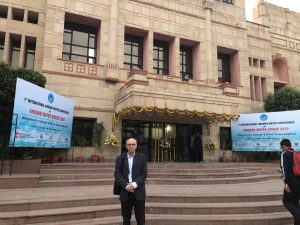
November 8, 2017: Some Coal Ash from China Too Radioactive for Reuse. A new study published in Environmental Science and Technology reveals that elevated level of uranium is some of coal deposits in China can lead to extreme high levels of radioactivity in coal combustion residues (CCRs) generated from these coals. The study examined the occurrence and distribution of radium (radium-226 and radium-228) and lead (lead 210) nuclides from the uranium- and thorium-decay chains in coals from different basins in China as well as coal ash from one site where such uranium-rich coal is utilized. Based on these results, the relationships between NORM levels in CCRs and uranium contents in parent coals were established. The magnitude of radiation that was found and modeled in some of the Chinese coal ash far exceeds safe standards for radiation in building materials. By comparing the ratio of uranium in the coal to the radioactivity of the coal ash, the study identified a threshold at which uranium content in coal becomes too high to allow coal ash produced from it to be used safely in residential building construction. This threshold — roughly 10 parts per million of uranium– is applicable to high-uranium coal deposits worldwide, not just in China, and should be considered when deciding whether to allow coal ash to be recycled into building materials. This study is part of collaboration between Duke University (Avner Vengosh group) and China University of Mining and Technology (CUMT) in Beijing and Xuzhou, China (Shifeng Dai group). Duke press release is posted here, an article in the Duke Chronicle, Asian Scientist Magazine, German news,
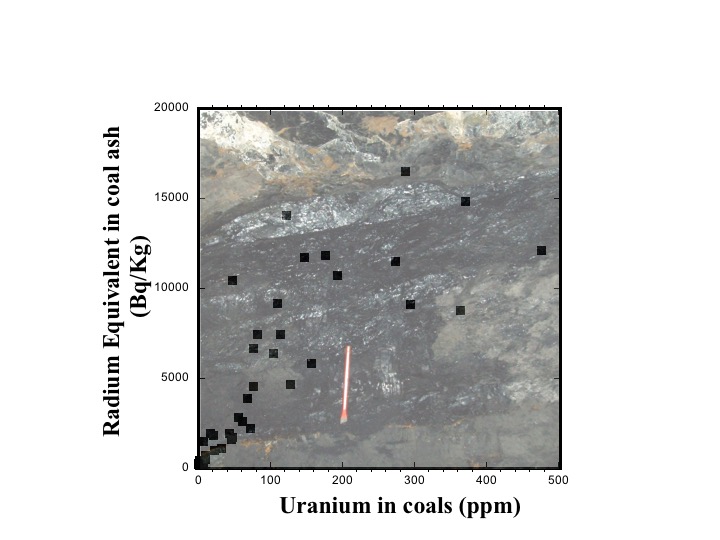
November 1, 2017: High molybdenum in Wisconsin groundwater is not from coal ash contamination. A new study entitled “Naturally Occurring versus Anthropogenic Sources of Elevated Molybdenum in Groundwater: Evidence for Geogenic Contamination from Southeast Wisconsin, United States ” published in Environmental Science and Technology reveals that high molybdenum discovered in in drinking-water wells in southeastern Wisconsin is not derived from coal ash disposal sites that are highly abundant in this region, but rather is naturally occurring (geogenic), originated from mobilization of of molybdenum from sulfur-rich rocks. The study utilized overall water chemistry, geochemical tracers of boron and strontium isotopes, combined with age-dating isotope techniques to show that the molybdenum-rich groundwater is old (residence time >300 years) with geochemical fingerprints that are not consistent with those expected for coal ash contamination. This study is a result of collaboration between Duke University (Avner Vengosh group) and Ohio Sate University (Tom Darrah group) with the help and support of Clean Wisconsin. Duke press release is posted here. The study was reported in the Herald Sun newspaper.
September 19, 2017: Environmental and Human Impacts of Unconventional Energy Development – Virtual Issue in Environmental Science and Technology and Environmental Science and Technology Letters:

Avner Vengosh (Duke University), William A. Mitch (Stanford University) and Lisa M. McKenzie (University of Colorado Anschutz Campus) were the guest editors of a special virtual issue “Environmental and Human Impacts of Unconventional Energy Development”. for the journals Environmental Science and Technology and Environmental Science and Technology Letters:
The rise of the “shale revolution” at the beginning of the 21st century triggered a hotly contested public debate as to whether the economic benefits of extraction of natural gas and oil from unconventional resources (unconventional oil & gas; UO&G) such as deep shale plays outweigh the environmental and health risks. Benefits are purported to include an expanded energy portfolio and reduced climate forcing through greater availability of natural gas, whose combustion emits less carbon dioxide and other air pollutants than for coal. Risks are purported to include increased climate forcing as a result of fugitive methane emissions, localized air and water pollution, and ecological and community impacts.Our understanding of the environmental and human impacts of UO&G continues to evolve. Given how UO&G has transformed energy systems worldwide, continued efforts are required to ensure the optimal balance between benefits and risks. Therefore, Environmental Science & Technology (ES&T) and Environmental Science & Technology Letters (ES&T Letters) have organized a Virtual Issue that highlights recent advances in the following areas:
Despite intense recent research focus in this area, there remains many gaps in our understanding of the impacts of UO&G, including, but not limited to: air pollutant emissions rates for less-well studied U&OG plays, ecological effects of high intensity, long-term UO&G operations, role of hydraulic fracturing fluids (vs. hydrocarbons) in toxicity of hydraulic fracturing wastewaters, how best to treat, reuse and/or dispose of the vast quantities of UO&G wastewater, and the interaction between chemical and non-chemical (e.g., social, infrastructure) UO&G stressors. Given the long list of research needs, we invite the community to submit studies to ES&T and ES&T Letters that significantly advance our understanding of the environmental and human risks and benefits of UO&G. Objective scientific research on environmental issues associated with UO&G is especially needed given the intense public debate on the environmental effects of UO&G. See full editorial: acs.est.7b04336
August 1, 2017: Fracking Studies Earn ‘Most Cited’ and ‘Highly Read’ Accolades from the American Chemical Society. The editors of the ACS journal Environmental Science & Technology Letters have tapped the 2015 paper, “Water Footprint of Hydraulic Fracturing,” by PhD student Andrew Kondash and Avner Vengosh, professor of geochemistry and water quality, as one of their five Highly Read Editors’ Choice selections. A 2013 paper by Vengosh’s lab, “Impacts of Shale Gas Wastewater on Water Quality in Western Pennsylvania” has been recognized as one of the five most cited articles published in the journal Environmental Science & Technology. Avner Vengosh was recognized as the Highly Prolific Author for Environmental Science & Technology Letters (see list). Here are Duke press release and Duke Chronicle article.
April 25, 2017: A new study on the impact of shale gas development and hydraulic fracturing on water quality in West Virginia.
A new study was published in Geochemica Cosmochimica Acta reports a three-years study and evaluation of the quality of groundwater and surface water in areas of intensive shale gas development in West Virginia. The study investigated drinking water wells before and after the installation of nearby shale gas wells for a wide range of geochemical tracers including major and trace elements, water isotopes, isotopes of dissolved salts (boron, strontium, lithium, carbon), hydrocarbons and their stable carbon isotopes, and noble gas geochemistry. This is one of the most comprehensive studies that have investigated the possible impact of hydraulic fracturing on water quality. The results of the study show that saline groundwater and relatively high levels of hydrocarbons in shallow aquifers are derived from naturally occurring processes and are not affected by shale gas development. In contrast, recurrences of spills have caused surface water contamination with geochemical fingerprints identified to flowback and produced waters from shale gas wells. Duke University has issued a press release on this study. The study was reported in NPR StateImpact, Libertarian Republic, Daily Caller, E&E News, Fox News, the Science Times, Public WV Radio, Editorial on Darkersburg News and Sentinel, MetroNews, Hoppy Kercheval Radio Show,
April 15, 2017: A new study on fluoride exposure. A new study on biomarkers of chronic fluoride exposure of rural populations in Ethiopia was published in Science of the Total Environment. The paper examined the relation between fluoride concentrations in fingernail clippings and urine and the prevalence and severity of enamel fluorosis among Ethiopian Rift Valley populations exposed to high levels of fluoride in drinking water.
January 12, 2017: $500,000 USDA Grant Funds Study on Impacts of Using Oilfield Wastewater for Irrigation. A team of Duke University and RTI received funding from USDA to study the long-term impact of using oilfield brines for irrigation in California. The Duke team composed of Avner Vengosh and Erika Weinthal will look at the possible impact on soil and plant chemistry in areas where oilfield brines have been used for irrigation in Central Valley, California. This project is part of the Energy-Water-Food Nexus research at Duke University. For more information see here. For information on the project and the participants see the project web site.
November 1, 2016: Avner Vengosh was selected for the the 2016 Reviewer Awards by the editors of Environmental Science and Technology. The announcement by Editor in Chief David Sedlak include :
“Each year we present reviewer awards to recognize the efforts of exceptional reviewers who somehow found time in their busy schedules to review multiple papers and share deep insights with us. These are the people who went the extra distance to provide reviews that bring authors back to ES&T. They are the ones who turned a good manuscript into an excellent paper. They are truly the peers behind our peer review.”
October 26, 2016: A new study on the origin and distribution of hexavalent chromium in drinking water wells from the Piedmont region of North Carolina was published in Environmental Science and Technology Letters. The study, shows that hexavalent chromium is naturally occurring, originated from water-rock interactions, particularly in aquifers composed of mafic rocks. The data show that groundwater samples with high hexavalent chromium had chemical and strontium isotope ratios that are different from the compositions expected for coal ash contamination. This study is the first to show that hexavalent chromium occurrence is not restricted to sites affected to anthropogenic contamination and the distribution of hexavalent chromium is much wider in drinking water wells than previously anticipated. The paper was selected as Editors Choice and is posted here: hexavalent-chromium-in-piedmont-groundwater. The study was reported in Duke Press release, followed by TV shows including WRAL , WBTV, ABC News , radio shows including NPR _WUNC, WFAE (with David Boraks) , and numerous news items including Washington Post, Charlotte Observer, Richmond Times, North Carolina Health News, Fayetteville Observer, Progressive Pulse, The Herald Sun, Sanforld Herald, Charlotte Buisness Journal, The Daily Tarheel,

October 14, 2016: A new study on the quantity and the source of wastewater originated from unconventional oil and gas wells was published in Science of the Total Environment. The study evaluates the volume and dynamics of wastewater generated from oil and gas wells in the major unconventional oil and gas basins in the U.S. The study shows that during the first few months the volume of wastewater is high and yet after 6 months the volume is typically reduced by an order of magnitude, similar to the reduction of hydrocarbons extracted from shale gas and tight oil wells. The study shows that the volume of the injected water returned to the surface is far lower than the volume of the injected hydraulic fracturing water. By using the changes in the salinity of the flowback water, the study conducted mass-balance calculations to show that the contribution of the returned injected hydraulic fracturing fluids is low and consists of 4-8% of the total volume of unconventional oil and gas wastewater. In contrast, the volume of the formation water that is entrapped within the shale or tight sand consists more than 90% of the total volume of unconventional oil and gas wastewater. Duke press release is presented here. The study was published in several media and news items, including Daily Caller, Water World, Kallanish Energy.
June 10, 2016: A new study that presents evidence for leaking of coal ash ponds in the Southeastern U.S. was published in Environmental Science and Technology. The study examines possible leaking of coal ash ponds from 7 coal ash pond sites in Tennessee, Georgia, Virginia, and Kentucky and 14 sites in North Carolina. We used geochemical and isotope tracers to demonstrate that all of the investigated sites are leaking to both surface water and one site also to shallow groundwater. In some cases, the impacted water had also elevated levels of contaminants above the EPA drinking and ecological standards, causing direct contamination of surface water and shallow groundwater. The study is based on systematic sampling and analysis of seepages, surface water, and shallow groundwater relative upstream background water and using sensitive geochemical fingerprints that allow the detection of contaminants that were originated from coal ash. We used the boron and strontium isotope fingerprints to delineate the source of contamination and verify their link to coal ash ponds. In North Carolina we used NC-DEQ database for groundwater samples collected and analyzed between 2010 and 2015. The data show that out of 165 monitoring wells, 65 were impacted with high boron levels and 49 had high contaminants levels that are typical of coal ash ponds. This is one of fist attempts to conduct a large scale evaluation of the risks of coal ash ponds to waterways and shallow groundwater in the southeast U.S. Duke press release is presented here. The paper was aired in WUNC (NPR) and WRAL and published in several media and news papers, including Winston Salem Journal, Charlotte Observer, Fredricksburg, Forbes, The Daily Progress, News and Observer, Undark, Environmental Leader, Atlanta Journal, Bay Journal.
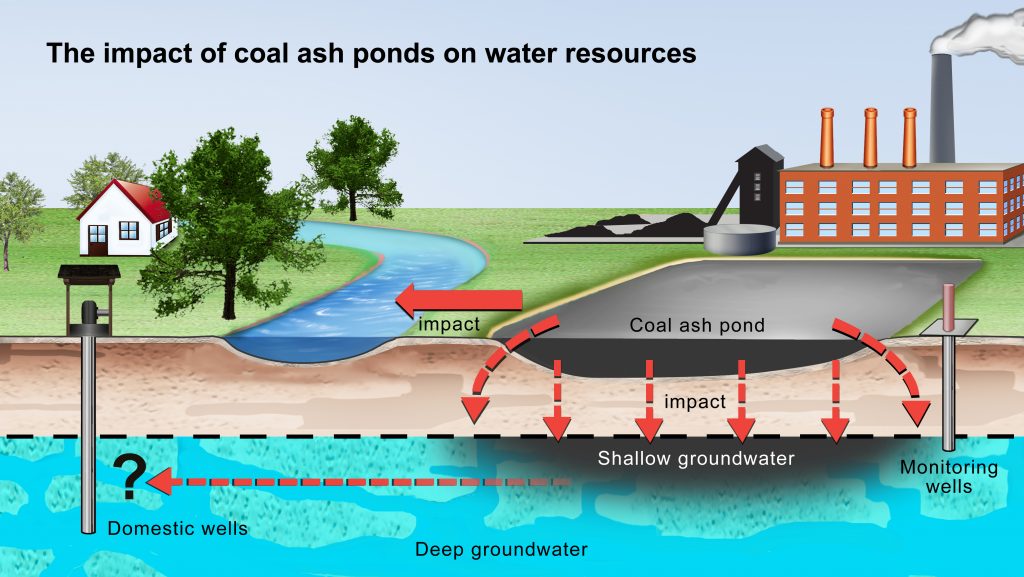
May 18, 2016: Avner Vengosh visited NewTown in Fort Berthold Indian Reservation, North Dakota and met with tribal and community college members to discuss the outcome of the study on oil brine spills in North Dakota and implications on the environment and human health. The meetings were covered by local media including Oil Patch Dispatch, Bismarck Tribune, and local TV stations – the KXnew and KMOT-TV . the presentation was recorded and presented by North Dakota Resource Council. For more on community empowerment and conversation see the article “Facing Fracking Fears, Tribal Advocate Finds Affirmation in Water Contaminant Study” by Ben Young Landis.
May 2, 2016: A new study that presents a new application for age-dating soil impacted by oil and gas wastewater spills was published in Environmental Science and Technology Letters. When Ra-bearing oil and gas wastewater is released to the environment, radium is retained to the impacted soil and sediments. The study presents three independent age-dating methods based on the decay and ingrowth of radium isotopes and their progeny: 226Ra/210Pb, 228Ra/226Ra, and 228Ra/228Th. The different time scales of decay and ingrowth of these isotopes provides a new tool that could enable scientists to distinguish spill derived from recent unconventional oil and gas operations from older spill events, originated from conventional oil and gas legacy. The study was reported in Duke press release, and published in several media outlets, including Science Daily, Science Codex, Environmental Research Web,
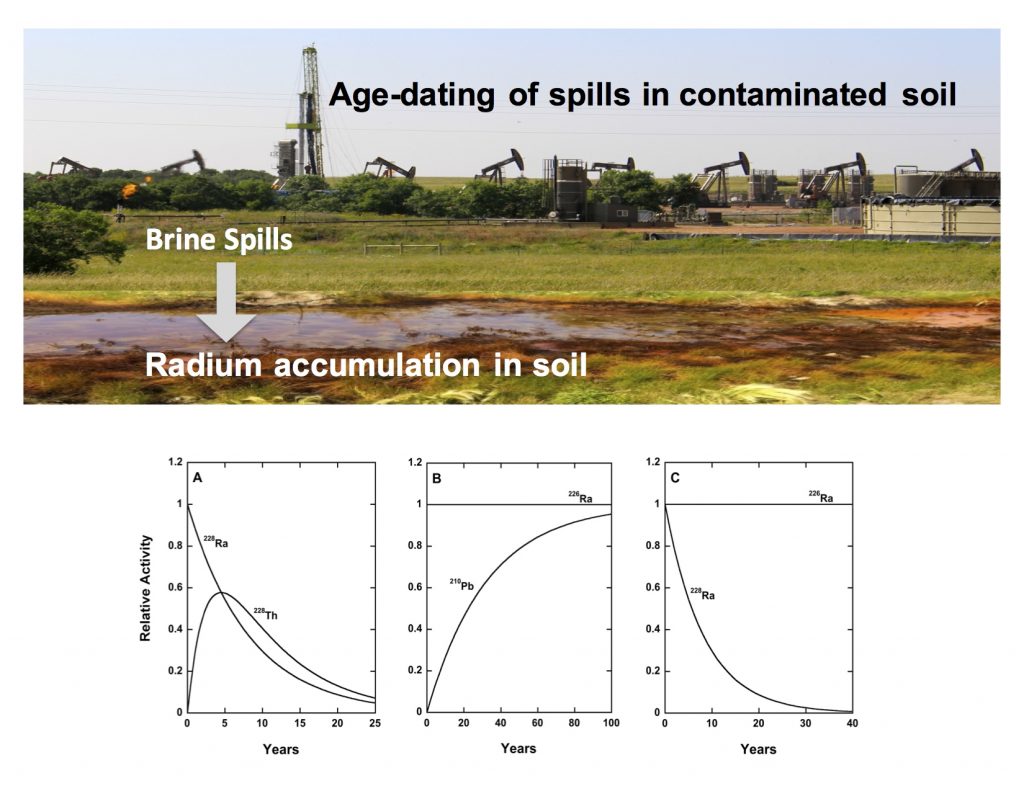
April 27, 2016: A new study on oil and gas wastewater spills in North Dakota was published in Environmental Science and Technology. This paper is the first to systematically examine the chemistry and quality of brine spills in areas of unconventional oil extraction in the Bakken region. The major take away points of this paper are (1) in addition to the high salts content, the Bakken produced waters have high levels of inorganic contaminants such as selenium, ammonium, and vanadium; (2) these inorganic contaminants are resilient in the environment and can be detected in spill water even a few years after the spill events; (3) the strontium isotope ratios of the Bakken brines are different from the composition of local surface water and groundwater and thus strontium isotopes can be used as a powerful tool to monitor and delineate brine spills in North Dakota; and (4) radium radionuclides are retained from the spill water to the soil and sediments in spill sites, causing accumulation of radium and decay products in the soil. The migration and dilution of the spill brines in the environment further intensify the radium mobilization to the soil, and high radium was observed in soil located downstream from the original spill sites. Duke press release is described here. Numerous media outlets reported the study, including Great Forks Herald, Bismarck Tribune, KFYR-TV, CBS News, ZME Science, Inside Climate, Science Daily, U.S. News and World Reports, Chemical & Engineering News, Billings Gazette, Oil Price, Digital Journal, Energy Voice, Eco-watch, TruthOut, , Alternet, the Dickinson Press, Petro Industry News,

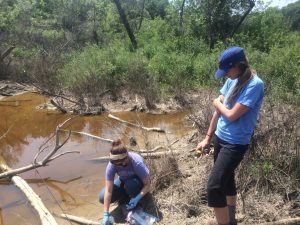
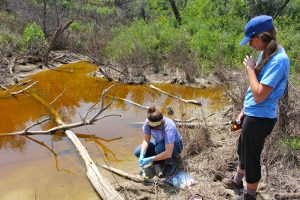

January 2016: A new paper by Schlesinger and Vengosh entiled “Global Boron Cycle in the Anthropocene” was published in Global Biogeochemical Cycles.
December 2015: Avner Vengosh gave a presentation on the environmental effects of unconventional energy development in the Golan Height, Israel. Vengosh also visited a rig that is part of exploration that attempts to tap hydrocarbons from unconventional resources in the Golan Height.

December 3, 2015: A cover story in Energywire: Marcellus researchers expand focus to other fracking hot spots
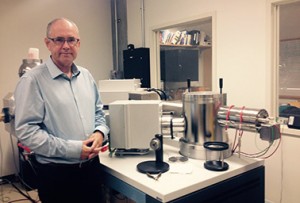
October 14-15, 2015: The Second Water-Energy in China workshop was held in Duke Kunshan campus at Kunshan, China. More than 100 participants from China, the US, and Israel attended the workshop that addressed different topics — science, engineering, policy — related to the water-energy nexus in China. For more details on the workshop see here. For the program, list of speakers, and their presentation see the workshop web site.
September 20, 2015: Avner Vengosh gave a Plenary Keynote presentation on “An overview of the risks to water resources from unconventional energy exploration and hydraulic fracturing” at the opening night of the 15th EuCheM International Conference on Chemistry and the Environment, Leipzig, Germany.
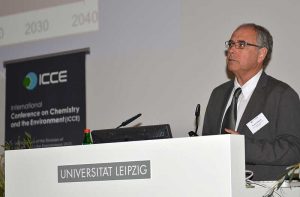
September 15, 2015: A new study examines the water use and volume of flowback and produced water generated from hydraulic fracturing. The paper “Water footprint of Hydraulic Fracturing” was published in the journal Environmental Science and Technology Letters. The study is the first to integrate several databases sources to generate a comprehensive evaluation of the water use, water use intensity (normalized to the energy utilized), flowback and produced water generation, and flowback and produced water intensity. Duke press release is posted here. The American Chemical Society press release is here. The study was reported by numerous news clips including Nature World News, R&D Magazine, Triangle Business Journal, High Country News, WaterWorld, and Natural Gas Report. The paper is posted here:Water Footprint of Hydraulic Fracturing_EST_Letters.
The paper was selected for the cover page of Environmental Science and Technology Letters.
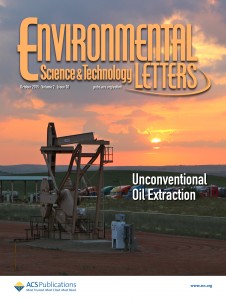
September 2, 2015: A new paper on the occurrence and distribution of naturally occurring radioactive materials (NORM) was published in Environmental Science and Technology. The study provide systematic evaluation of the levels of radionuclides in coals from the three major basins in the US and their coal combustion residues (coal ash). The study established a formula to predict the levels of radium in coal ash based on the uranium and thorium contents of the parent coal. The study also explores the environmental and human health risks associated with the emission of coal ash particles with relatively elevated radium and lead-210 levels. Duke press release is presented here. The study was reported by numerous news clips including the Climate Progress, WNCN TV, Charlotte Observer, Winston-Salem Journal, Anence France Presse, RT, and Science World Report. The paper is posted here: NORM in coal and coal ash_EST

August 10, 2015: Avner Venter talks with Katie Burke on hydraulic fracturing and water quality. American Scientist, Spotlight, interview with Katie L. Burke. Audio Exclusive: An Interview with Avner Vengosh
July 29, 2015: Avner Vengosh talks on radioactivity in groundwater from North Carolina: Interviewed by Eileen Park, WNCN

July 13, 2015: Avner Vengosh Elected Fellow of the Geological Society of America. Avner Vengosh, professor of geochemistry and water quality at Duke University’s Nicholas School of the Environment, has been elected a Fellow of the Geological Society of America (GSA). GSA fellowships are awarded annually to scientists who have been recognized by their peers as making significant contributions to the field of geology through published research, public outreach, and the training of graduate students. In selecting Vengosh for the honor, the GSA cited his “research contributions in isotope and environmental geochemistry, including seminal studies in the area of energy development and water quality” and his role as “an innovator in methodological development of boron isotope measurements and their use in solving hydrogeochemical and environmental problems.” A prolific researcher with more than 100 peer-reviewed studies to his credit, Vengosh is widely cited for his groundbreaking development of isotopic “fingerprinting” technologies that allow scientists to identify and measure water contaminants and track them to their source. His research has played a central role in assessing – and helping find solutions to – potential risks to water resources posed by a wide range of causes, including salinization; coal ash residue; oil and gas drilling and hydraulic fracturing; oil and gas wastewater disposal; agricultural contamination; and mountaintop coal mining runoff. As part of his team’s research on the environmental effects of hydraulic fracturing, they have collected and analyzed more than 1,000 water samples from drinking water wells and surface water in Pennsylvania, West Virginia, New York, Arkansas, North Carolina, Colorado, California and North Dakota.Vengosh has also used his forensic tracers to identify the sources of natural radioactivity in groundwater supplies in the Middle East and radon in groundwater in the southeastern United States, and to identify links between naturally occurring water contaminants, local geology and human health in Ethiopia, Morocco and Vietnam.A study he led identifying high levels of radioactivity, salts and metals in shale gas wastewater was named the best science paper of 2013 by the editors of the journal Environmental Science & Technology. Another study, providing the first comprehensive review of potential risks to water resources posed by unconventional shale gas development and hydraulic fracturing, was selected as one of the best peer-reviewed studies of 2014 by the editors of the same journal. In recognition of his expertise, Vengosh has twice been invited to testify before Congress on the water-quality impacts of coal ash contamination.

May 18-19, 2015: Avner Vengosh participated and presented at the National Academy of Science workshop on “Chemistry and Engineering of Shale Gas and Tight Oil Resource Development” at Washington, DC. For more information on the workshop see this link.
 April 16, 2015: A critical review paper that provided the first comprehensive review of the potential risks to water resources posed by unconventional shale gas development and hydraulic fracturing has been selected as one of the best peer-reviewed papers of 2014 by the editors of the journal Environmental Science & Technology (ES&T). The paper “A Critical Review of the Risks to Water Resources from Unconventional Shale Gas Development and Hydraulic Fracturing in the United States” was chosen as 2nd runner-up in the Environmental Policy category. It was selected for the honor from among more than 1,700 peer-reviewed papers published in ES&T in 2014. This is the second year in a row a paper by Vengosh’s team has been selected as one of ES&T’s top papers. The paper “Impacts of shale gas wastewater disposal on water quality in western Pennsylvania” was selected as the journal’s Best Science Paper of 2013. For more information see Duke Press release. The paper is posted here: ES&T Review on hydraulic fracturing.
April 16, 2015: A critical review paper that provided the first comprehensive review of the potential risks to water resources posed by unconventional shale gas development and hydraulic fracturing has been selected as one of the best peer-reviewed papers of 2014 by the editors of the journal Environmental Science & Technology (ES&T). The paper “A Critical Review of the Risks to Water Resources from Unconventional Shale Gas Development and Hydraulic Fracturing in the United States” was chosen as 2nd runner-up in the Environmental Policy category. It was selected for the honor from among more than 1,700 peer-reviewed papers published in ES&T in 2014. This is the second year in a row a paper by Vengosh’s team has been selected as one of ES&T’s top papers. The paper “Impacts of shale gas wastewater disposal on water quality in western Pennsylvania” was selected as the journal’s Best Science Paper of 2013. For more information see Duke Press release. The paper is posted here: ES&T Review on hydraulic fracturing.
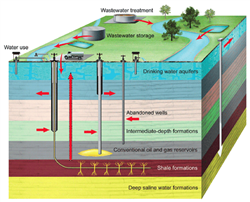
January 21, 2015: A new paper on the direct measurement of the boron isotope fractionation factor between boron species was published in Earth and Planetary Science Letter. The boron isotopic composition of calcium carbonate skeletons is a promising proxy method for reconstructing paleo-ocean pH and atmospheric CO2 from the geological record. Although the boron isotope methodology has been used extensively over the past two decades to determine ancient ocean-pH, the actual value of the boron isotope fractionation factor (epsilon) between the two main dissolved boron species, 11B(OH)3 and 10B(OH)4–, has remained uncertain. The new study provides, for the first time, an independent empirical fractionation factor (26.0 ±1.0 permil; 25◦C), determined by direct measurements of B(OH)3 in seawater and other solutions. Boric acid was isolated by preferential passage through a reverse osmosis membrane under controlled pH conditions. The revised methodology lays the foundation for a more accurate determination of ocean paleo-pH through time. The paper is posted here: Boron isotope fractionation factor

January 14, 2015: A new study on the occurrence of iodide, bromide, and ammonium in oil and gas wastewater was published in Environmental Science and Technology. The study shows high levels of iodide and ammonium in both hydraulic fracturing fluids and produced water from conventional oil and gas wells. The high correlation of ammonium to chloride suggest that these contaminants are geogenic and their presence in formation waters is controlled by the composition of the formation rocks. Elevated levels of iodide and ammonium (up to 50 times the EPA regulation for ammonium) were found also in effluents that are discharge to waterways from there disposal sites in PA and a spill in WV that cause direct contamination of the associated streams and rivers. Duke press release of the study is posted here. The study was reported by numerous news clips including the Daily Climate, Think Progress, Scientific American, Science news, Akron Beacon Journal, Pittsburgh Post Gazette, News and Observer, Science News, Water World, Digital Journal, Newsroom America, Eagleford Texas, Salon, Environmental Working Group, and Charleston Gazette. The paper is posted here: es504654n_iodide and ammonium
NSF reports on this study by the news clip (see the second item).
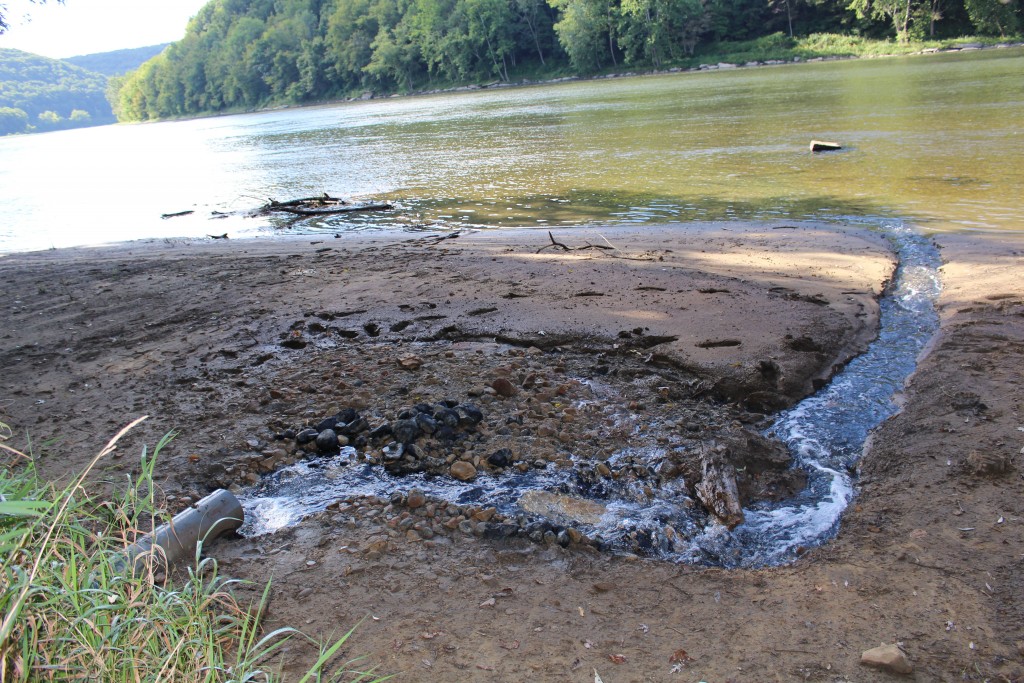
January 9, 2015: A new study on the occurrence of arsenic in groundwater and the exposure of local residents in the Mekong Delta of Vietnam was published in Science of Total Environment. The study shows high level of arsenic (up to 1,000 ppb) in groundwater adjacent to the Mekong River. High arsenic was found particularly in reduced and low-saline groundwater. Arsenic content in nails collected from local residents was significantly correlated to As in drinking water (R=0.56, p<0.001). Survey data show that the ratio of arsenic in nail to arsenic in water varied among residents, reflecting differential arsenic bioaccumulation in specific exposed sub-populations. The paper is posted here Arsenic exposure in Mekong Delta.
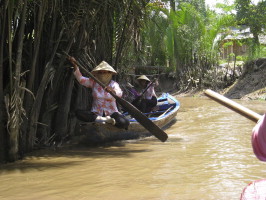
December 16, 2014: A new study on the use of boron and strontium isotopes as tracers for the impact of coal ash contaminants on the environment was published in Environmental Science & Technology. The study examined the boron and strontium isotopic fingerprints of coal ash originated from coals of different basins in the USA as well as specific case studies where coal ash has impacted the environment: the TVA coal ash spill in TN, the discharge of coal ash effluents to waterways in NC and impacted water resources. The study found the integration of boron and strontium isotopes with water geochemistry could provide a unique and powerful tool for delineating and quantifying the impact of coal ash on the environment. Duke press release of the paper is here. The paper is posted here: es503746v_coal ash tracers.
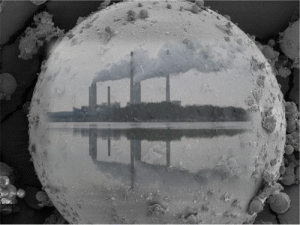
November 7, 2014: Duke University and Duke Kunshan University (DKU) water-energy workshop, Fairmont Hotel, Kunshan, China, chaired by Avner Vengosh and Marc Deshusses. Over 50 participants attend the water-energy workshop held along Yangcheng Lake, in Kunshan. The workshop addressed key interdisciplinary issues related to water and energy development in China, including oil and gas, coalbed methane, and unconventional shale gas and hydraulic fracturing. The workshop presented data on water availability and quality in China, energy development, environmental effects of the different energy development particularly, derived from hydraulic fracturing, water law, water policy, and treatment technologies. The workshop aimed to explore possible research networks and collaboration of Duke and DKU faculty with Chinese colleagues engaged with water and energy research. Speakers included scientists from different academic institutions in China and Duke faculty addressing both scientific, engineering, and policy aspects. For the program and details see here.

October 20, 2014: A new study of tracing hydraulic fracturing fluids in the environment by using boron and lithium isotopes was published in Environmental Science and Technology. This is the first study to use boron and lithium isotopic fingerprints for delineating hydraulic fracturing fluids in contaminated water and distinguish their impacts from other sources of contamination. The distinguished geochemical signature of flowback water is hypothesized to be derived from mobilization of boron and lithium from exchangeable sites on clay minerals during hydraulic fracturing process. Duke press release of the paper is here. NSF funded the project and also issued a press release. The study was reported by numerous news clips including News and Records, Think Progress, Laboratory Equipment, Headlines and Global news, Environmental leaders, News and Observer, Water World, and Earth Magazine. The paper is posted es5032135.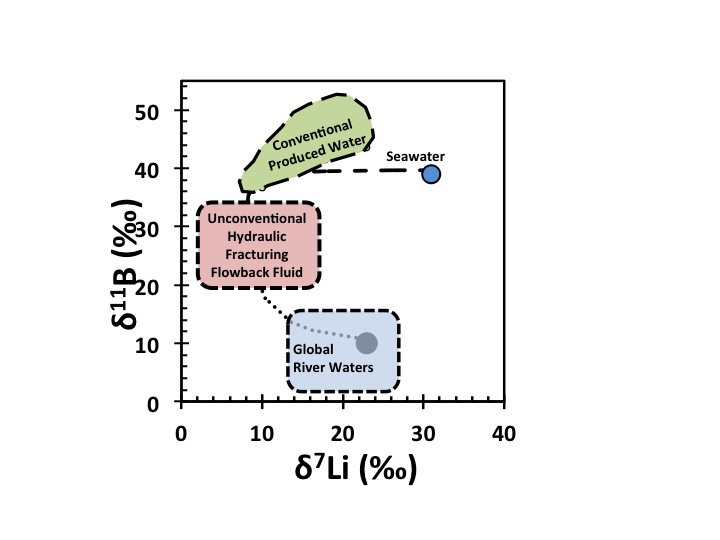
September 24, 2014: A new study on the potential formation of highly carcinogenic disinfection byproduct from hydraulic fracturing fluids diluted by river water was published in Environmental Science and Technology. The study shows that even a small fraction, as low as 0.01 percent up to 0.1 percent of hydraulic fracturing fluids in disinfected river water that is used for drinking could result in the formation of disinfection byproducts in drinking water utilities located downstream from disposal or spill sites of hydraulic fracturing fluids. ACS press release of the study is here. The paper is post here.es5028184
September 15, 2014: A new Duke study on stray gas contamination in drinking water wells located near shale gas drilling sites in Pennsylvania and Texas was published in the Proceedings of national Academy of Science of the USA. The new study established new geochemical methodology based on the integration of noble gas geochemistry and hydrocarbons ratios and isotopes to distinguish between naturally occurring methane flux to shallow aquifers and methane contamination derived directly from leaking from shale gas wells. The paper is posted here: PNAS-2014-Darrah-1322107111. More information on the paper is in Duke press release. The study was covered by hundreds of news clips from all over the world including the New York Times, USA Today, BBC, the Telegraph, Wall Street Journal, Newsweek, Bloomberg, the Guardian, Washington Post, Weather ford Democrat, Dallas morning News, Public News Service , Salon, as well as radio stations including NPR WUNC, the John Gambling Show, NYC, and Hoppy Kercheval of Metronews, West Virginia Radio Network.
August 8-12, 2014: Future hydraulic fracturing and shale gas exploration in North Carolina: The News and Observer article on research at Duke on hydraulic fracturing and editorial on the lack of North Carolina officials to use the scientific data. Also Vengosh’s interview to Capital Tonight, Time Warner Cable News is linked here.
July 29, 2014: A Response to Comment on “High Naturally Occurring Radioactivity in Fossil Groundwater from the Middle East” was published in Environmental Science and Technology (es501140b)
June 26 – July 7, 2014: Avner Vengosh visit to South Africa as part of a water-quality baseline research at the Karoo Basin. Dr. Vengosh gave public presentations at the University of Cape Town and University of Pretoria and also participated in two-days workshop entitled “Review of risks to water resources from unconventional gas exploration and production in South Africa and water science plan for unconventional gas development (Workshop-outcomes-unconventional-gas-risks to water).
May 1, 2014: Avner Vengosh presents a keynote talk at the EGU meeting in Vienna, Austria: “Risks to Water Resources from Shale Gas Development and Hydraulic Fracturing in the United Sates”

March 7, 2014: A new paper “A Critical Review of the Risks to Water Resources from Unconventional Shale Gas Development and Hydraulic Fracturing in the United States” was published in Environmental Science &Technology. This paper provides a critical review of all available literature on the possible risks of water resources from shale gas development and hydraulic fracturing. This is one of the few attempts to provide a comprehensive and objective evaluation of the state of knowledge with respect the possible effects of shale gas and hydraulic fracturing on water resources in the US. (es405118y)
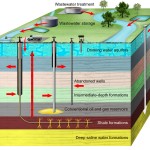
March 6, 2014: Our study on the environmental effects of shale Gas wastewater Named ES&T’s Best Science Paper for 2013 (!). Out of 1,600 papers published in ES&T during 2013, the journal editors selected our paper. The ES&T announcement and interview with the paper authors Nat Warner and Avner Vengosh is presented here. Duke press release is presented here. A link to the paper is provided here.
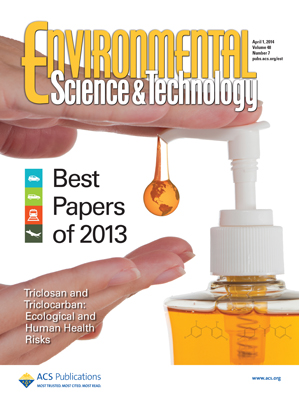
February 5, 2014: Avner Vengosh giving a talk on the “Myths and Reality of Water Contamination from Fracking” at Duke Center for International Studies.
December 31, 2013: The paper on elevated level of radioactivity in hydtraulic fracturing fluids and radium accumulation on sediments in a disposal site in PA was selected for the Top 11 Energy & Environmental Infographics of 2013.
December 24, 2013: A new study on the beneficial use of blending hydraulic fracturing fluids with acid mine drainage shows that much of the radioactivity of flowback water from shale gas would be reduced due to co-precipitation of Sr-barite minerals. The study was published in Environmental Science and Technology es_HF-AMD mix. See Duke Press Release. The study was reported Nature World News, NPR-PA, ABC-news, NSF news, Brazil Sun, and Water World.
November 5, 2013: A new study on arsenic occurrence in toenail keratin suggests that a person’s exposure to arsenic in drinking water can be detected by simple measurements of arsenic in the nails. The study was published in Journal Of Exposure Science And Environmental Epidemiology. See Duke press release of the study.
October 2, 2013: A new study finds elevated levels of radioactivity, salts and metals in river water and sediments at a site where treated water from oil and gas operations is discharged into a western Pennsylvania creek. The study was published in the journal Environmental Science and Technology. See Duke Press release. The study was reported by ACS web site, USA-Today, The Guardian Bloomberg Scientific American the Voice of Russia radio and many others. A copy of the paper is here.EST_impacts of shale gas wastewater
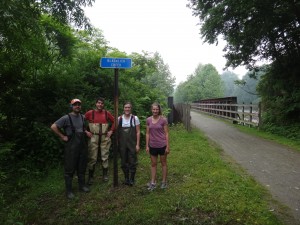
August 15, 2013: A new study characterizes the carbon, sulfur and strontium isotopic imprints of effluents from mountaintop mining and their affect on streams in West Virginia. The study was published in Environmental Science and Technology. See Duke press release. The study was reported by Appalachian Voices. Get paper here (EST_MTM isotopes)
June 24, 2013: A new study finds Higher Levels of Stray Gases Found in Water Wells Near Shale Gas Sites. The study was published in Proceedings of the National Academy of Sciences of the United States (PNAS). See Duke press release. Get paper (PNAS_Jacksonetal2013).
June 1, 2013: A documentary film “Downwind and downstream“, as part of a short film series on the impacts of coal ash interviews Avner Vengosh in the film “With Power comes Responsibility“.
May 30, 2013: Avner Vengosh presents “Risks of shale gas exploration and hydraulic fracturing to water resources in the US” at “Workshop on Risks of Unconventional Shale Gas Development” hosted by the National Academy of Science. The presentation See presentation here.
May 15, 2013: Study Finds No Evidence of Water Contamination from Shale Gas Drilling in Arkansas published in Applied Geochemistry . See Duke press release. Also AP report published in the Washington Post.
April 8, 2013: A new study on the salinity of groundwater from the Saharan oases in the Draa Basin of southern Morocco was published in Applied Geochemistry. See Duke Press release.
February 16, 2013: Vengosh interviewed by WCNC-TV on water contamination by coal ash ponds in North Carolina.
November 6, 2012: Geological Society America meeting, Pardee Keynote Sessions – Shale Gas Development and Hydraulic Fracturing Impacts on Water Resources in the United States , Charlotte, North Carolina.

Duke team at GSA 2012; From left: Cidney Christie (MEM, 2012), Alissa While (B.Sc., 2011), Brit Merola (PhD student), Nat Warner (PhD student), David Vinson (PhD, 2011), Avner Vengosh (EOS faculty), and Tom Darrah (Research Scientist)
November 5, 2012: Radioactive Water Threatens Middle East . Spiegel Online International, Germany.
October 28, 2012: Op-ed by Avner Vengosh in News and Observer: Coal ash’s threat to N.C. water . Also you can see it here.
October 18, 2012: Avner Vengosh to Testify on Environmental Impacts of Energy Production at Oct. 18 Congressional Briefing (Abstract_energy_AERC_Vengosh ). The extend presentation was presented at the Association of Ecosystem Research Centers (AERC) symposium and posted on-line.
October 15, 2012: High Levels of Coal Ash Contaminants Found in N.C. Waters: A new paper entitled “The Impact of Coal Combustion Residue Effluent on Water Resources: A North Carolina Example” was published in Environmental Science and Technology (see paper here).
July 9, 2012: A new paper entitled ” Geochemical evidence for possible natural migration of Marcellus Formation brine to shallow aquifers in Pennsylvania” was published in the Proceedings of the National Academy of Sciences of the United States (PNAS). One of the many media coverage and an interview with WRAL-TV is presented here.
March 10, 2012: Fieldwork to study water quality in Vietnam
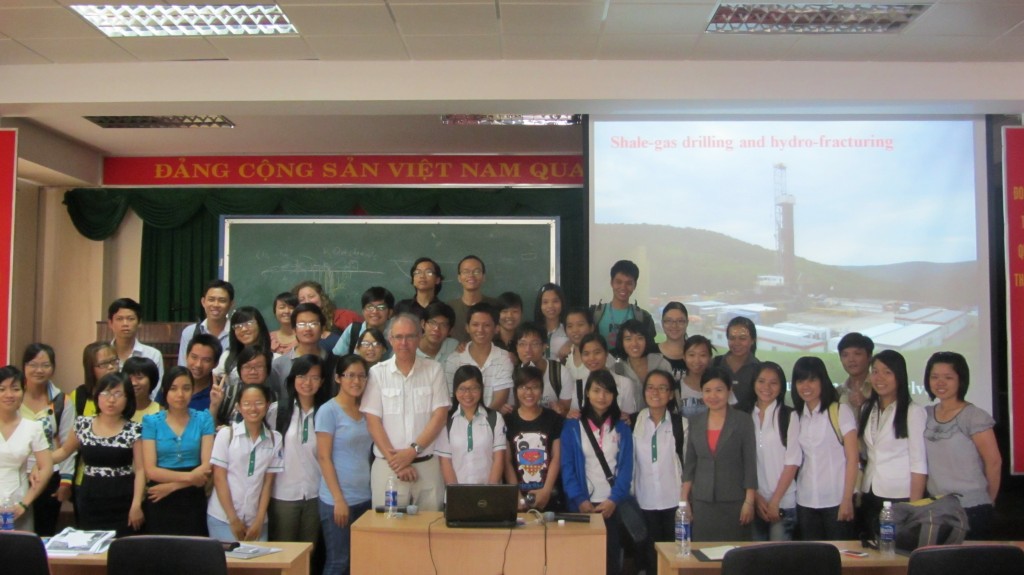
Seminar at the Faculty of Environmental Science, University of Science, Vietnam National University, Ho Chi Minh City, Vietnam
March 18, 2012: Fracking in New Zealand: Vengosh interviewed to 60 minutes New Zealand.
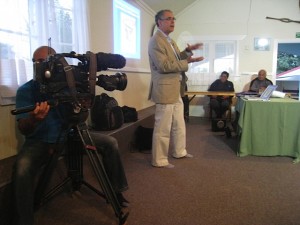
Vengosh presents the fracking research at the marae (welcome) Māori ceremony; Gisbone, North Island, New Zealand
January 9, 2012: Reynolds Theater, Bryan Center, Duke University
Environmental and social implications of Hydraulic fracturing and shale gas drilling in the United States: An integrative workshop for the evaluation of the state of science and policy (frackingflyer3rdP)
October 9-12, 2011: Presentations at the 2011 American Geological Society (GSA) meeting (Minneapolis, MN):
October 3, 2011: Avner Vengosh Presents Keynote at International Geochemistry Symposium
September 30, 2011 – PhD students Laura Ruhl and Brittany Merola win international awards
April 1, 2011 – Avner Vengosh named Fellow of International Association of Geochemistry
(more about IAGC fellow see here).

Vengosh receives the Fellow of International Association of Geochemistry Award award at the International Geochemistry Symposium – Applied Isotope Geochemisty (AIG-9), Tarragona, Spain, September 2011.

